Janice Horton's Blog, page 4
December 14, 2024
An Insider’s Travel Guide to New Orleans!
A travel guide to New Orleans – curated by a young musician based out of New Orleans – whom I met by chance as we travelled together on a Greyhound Bus from Miami is a NOLA first time visitor’s dream itinerary!
We struck up a conversation and I asked him where I should go in New Orleans as a first time visitor.
He recommended a list of places he said could offer the ultimate in experiences and best of New Orleans.
I immediately grabbed my notebook to jot down his tips and recommendations.
It turned out to be a list of the most amazing places and best experiences to have in New Orleans.
Without his expert advice I might not have found the very best way to spend my four nights in N’Awlins.
This is my insider’s itinerary and a special travel guide to New Orleans and I’m happy to share with you!
Travel with me to NOLA – New Orleans, LouisiAna, USA!
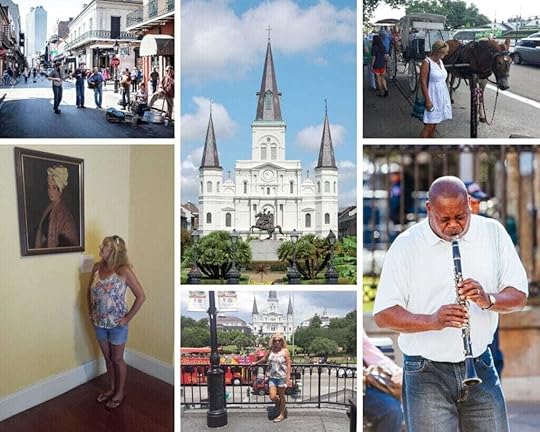 My insider’s itinerary and a special travel guide to New Orleans
My insider’s itinerary and a special travel guide to New OrleansTABLE OF CONTENTS
An Insider’s TRAVEL Guide to New Orleans THE FRENCH QUARTERWHERE TO STAY IN THE FRENCH QUARTERBOURBON STREETJACKSON SQUAREFRENCHMEN STREETSNUG HARBOUR JAZZ CLUBJazz, Blues, Oyster Bars, and Voodoo! FRENCH MARKETCrawfish Boil at ‘The Leaf’Classic Louisiana Bayou Crawfish BoilIRENE’S PLACETHE BEST EXPERIENCES IN NEW ORLEANS
NEW ORLEANS – JAZZ, BLUES, OYSTER BARS, AND VOODOO!
THE FRENCH QUARTERArmed with our specially curated insider’s itinerary and travel guide to New Orleans as provided to us by our young musician friend from the Greyhound Bus (you can read more about that fabulous road trip adventure HERE) we were staying for four nights in the gorgeous Chateau Hotel on Chartres Street in the French Quarter.
The French Quarter, or Vieux Carré, is the oldest neighbourhood in New Orleans and one of the most iconic and historic neighbourhoods in New Orleans.
Founded in 1718 by Jean-Baptiste Le Moyne de Bienville, it is the site of the original settlement of the city.
Despite its name – much of the present architecture in the French Quarter dates back to the Spanish colonial period (1762–1803) – although, tragically, fires in 1788 and 1794 destroyed many of the French-style buildings.
Its iron balconies, colourful stucco walls, and courtyards, picturesque streets and historic charms have made it a popular filming location for movies and TV shows including A Streetcar Named Desire and Interview with the Vampire.
As a designated historic district, The French Quarter also has a special and unique legal status, which helps to preserve its character, and this means that strict regulations ensure its distinctive architecture and ambiance remain intact.
Indeed, it is the mix of the past and present The French Quarter that encapsulates the spirit of New Orleans.
The French Quarter’s location along the Mississippi River helped it become a vital port and trading hub.
Today, visitors can enjoy riverboat cruises and scenic views along the Moonwalk Promenade, near Jackson Square.
 The French Quarter encapsulates the spirit of New Orleans
WHERE TO STAY IN THE FRENCH QUARTER
The French Quarter encapsulates the spirit of New Orleans
WHERE TO STAY IN THE FRENCH QUARTER
As soon as we arrived at our hotel – the beautiful Chateau Hotel on Charteris Street in The French Quarter – we were excited to check-in to our atmospheric, spooky-looking room, with its dark oak furniture and four-poster bed, and to drop off our luggage so we could lose no time in starting to explore the surrounding old neighbourhood.
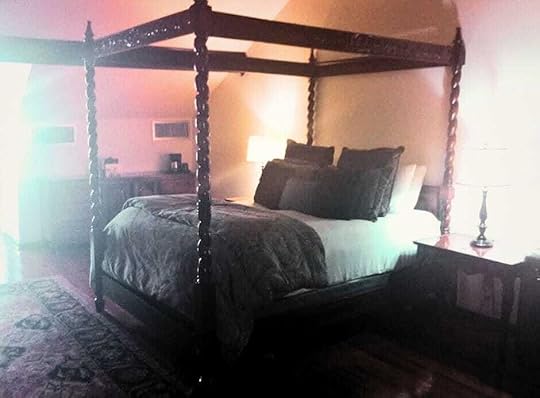 Our atmospheric spooky-looking room with its four-poster bed
Our atmospheric spooky-looking room with its four-poster bedYou can read more about the spooky side of New Orleans – reputed to be one of the most haunted cities in the world – and what I uncovered while researching in The French Quarter for my paranormal romantic novel NOLA in my post The Haunted Secrets of The French Quarter.
We loved our choice of hotel but of course there are many fantastic places to stay in The French Quarter.
From five-star hotels with swimming pools to historic family-run guesthouses there is accomodation for all styles and budgets.
FIND YOUR PERFECT PLACE TO STAY IN THE FRENCH QUARTER USING THIS INTERACTIVE MAP
BOURBON STREETBourbon Street is a famous and historic street in the heart of the French Quarter.
But as it turns out – the famous Bourbon Street – was apparently named after the French royal family ‘The House of Bourbon’ rather than the backpacking husband’s favourite liquor!
Bourbon Street is a popular destination for both locals and tourists and is the focal point for many festivals including the famous Mardi Gras celebration, when the street is filled with parades, colourful costumes, and lively crowds.
Bourbon Street is known for its vibrant nightlife, lively atmosphere, mix of bars, clubs, restaurants, and shops.
It’s home to numerous eateries serving a variety of local and international cuisines and is particularly known for its Creole and Cajun dishes.
It’s a place with a unique blend of history, culture, and entertainment, making it a must-visit for exploring.
But, to be honest, Bourbon Street was a bit of a culture shock to us.
It was crazy and crowded and noisy and smelly as we strolled along Bourbon Street, mostly holding our noses against the stench of urine and vomit, trying not to stare at the scantily-clad calling out to prospective clients from shady doorways.
We did stop off for a couple of drinks in a bar and to our delight we did witness a passing ‘jazz funeral’ but we decided the action, as far as we were concerned, (and according to our inside’s travel guide for visiting New Orleans) was elsewhere.
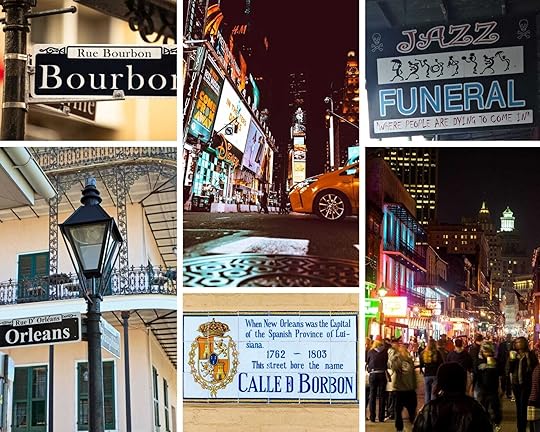 Bourbon Street is named after the French royal family rather than my husband’s favourite tipple.
JACKSON SQUARE
Bourbon Street is named after the French royal family rather than my husband’s favourite tipple.
JACKSON SQUARE
Luckily, we soon discovered the delightfully picturesque Jackson Square, just a block away in the opposite direction from Bourbon Street, with its artists and street jazz bands and its ragtag collection of colourful entertainers and tarot readers.
And, although this was my very first time in New Orleans, I felt that I already knew something about it because of all the online research I’d done for my novel.
In my fictional story NOLA my heroine travels to New Orleans to meet her fiancé’s family who live in the French Quarter.
Also, as part of my plot in the book involves a 1920’s painting of Marie Laveau – on view to the public in The Cabildo at the Louisiana State Museum in Jackson Square – viewing the painting had been at the top of our itinerary.
And it was here, in Jackson Square, at the Louisiana State Museum – a one-time courthouse and city hall where the Louisiana Purchase was signed that I came face to face with the so-called Witch Queen of New Orleans.
Or rather the 1920’s painting of Marie Laveau by Frank Schneider.
This very famous 1920s portrait of Marie Laveau is based on an 1835 painting (now lost) by George Catlin.
It was a fabulous and rather surreal experience to walk in the footsteps of my fictional heroine and stand in front of the masterpiece myself!
You can find out more about my novel NOLA or my other books on my Book Page.
 Musicians and street jazz bands on Jackson Square
FRENCHMEN STREET
Musicians and street jazz bands on Jackson Square
FRENCHMEN STREET
After freshening up back at our hotel – we went out to find Frenchmen Street – just a short walk away.
Frenchmen Street sits in one of New Orleans’ oldest neighbourhoods, the Faubourg Marigny, which dates back to the early 19th century.
Unlike the bustling and tourist heavy Bourbon Street, just a short walk away, Frenchmen Street has a reputation for being a spot where locals go to unwind.
So, it’s often regarded as a more authentic New Orleans experience.
The area was established by Creole plantation owner Bernard de Marigny who subdivided his land and turned it into a residential and commercial district.
Interestingly, Frenchmen Street gets its name not from French settlers but from six Creole men executed in the early 1800s for their opposition to the Spanish rule who were known as the Frenchmen.
Today, Frenchmen Street is often called the ‘music capital’ of New Orleans.
The street is home to legendary music venues such as The Spotted Cat Music Club, d.b.a., and Blue Nile, where you can hear everything from traditional jazz and blues to funk, reggae, and brass bands.
The sidewalks of Frenchmen Street often come alive with impromptu performances by incredibly talented street musicians, offering free, world-class entertainment and exudes an artsy, bohemian atmosphere.
Frenchmen Street also offers incredible dining options and unique cocktails:
Grab a po’boy, fresh oysters, or Creole-inspired small plates from nearby eateries like Adolfo’s (a hidden gem above the Apple Barrel Bar).
Bars on Frenchmen Street are known for serving drinks that pair perfectly with the vibrant nightlife and often with a local twist.
Frenchmen Street is a hotspot during New Orleans’ major festivals like Mardi Gras when the street buzzes with energy, featuring live music, parades, and costumed revelry.
And, Frenchmen becomes a central hub for after-party jam sessions, during the annual New Orleans Jazz & Heritage Festival.
We had drinks in a bar listening to a traditional washboard blues band and then following our Travel Guide to New Orleans as provided to us by the young musician.
We then went on to the famous Snug Harbour Jazz Club at 626 Frenchmen Street!
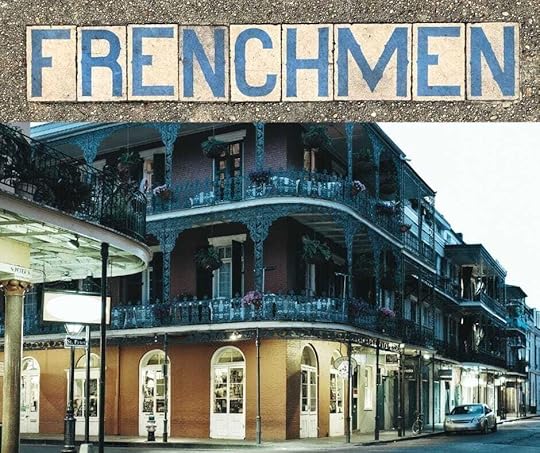 Frenchmen Street – often regarded as a more authentic New Orleans experience
SNUG HARBOUR JAZZ CLUB
Frenchmen Street – often regarded as a more authentic New Orleans experience
SNUG HARBOUR JAZZ CLUB
Well wow – what can I tell you about that night – our first night and our first experience of jazz and blues in New Orleans!
The music in New Orleans was everything I’d dreamed and hoped it would be and we had a truly unforgettable evening.
Snug Harbour Jazz Club is a music ‘hot spot’ and is easily located in an old and unassuming doorway between shop doors on Frenchmen Street.
We paid a cover charge and went downstairs into a small cellar called The Music Room at The Snug, where there was a small cabaret-style stage and the atmosphere was intimate and old and wonderful.
We were glad we arrived early to grab a couple of seats and a table and we ordered some drinks.
Soon the band came on and we were treated to an amazing cultural experience and live top-quality jazz and blues incorporating the sounds of gospel and soul.
It was a fabulous evening and we felt we truly experienced the true and timeless essence of New Orleans!
 Our first experience of jazz and blues in New Orleans!
Jazz, Blues, Oyster Bars, and Voodoo!
Our first experience of jazz and blues in New Orleans!
Jazz, Blues, Oyster Bars, and Voodoo!
The next morning we did some sightseeing and took a leisurely walk through the streets of the French Quarter, stopping to tip back our heads and admire amazingly authentic 19th-century mansions and beautifully decorated balcony apartments adored with draping greenery and flowers.
We strolled along the banks of the Mississippi River to admire the riverboats before stopping off for beignets (pronounced ‘Ben Yeah’) and coffee.
Beignets are a New Orleans signature sweet pastry made from deep-fried dough sprinkled with sugar.
Back in Jackson Square, in the lively heart of New Orleans, we joined the throngs of tourists to hear the street musicians and to see the tarot readers and fortune tellers and portraits artists who were all touting their talents and their wares.
 On the Mississippi River at New Orleans
FRENCH MARKET
On the Mississippi River at New Orleans
FRENCH MARKET
Later, for lunch, just two blocks from Jackson Square at 1001 Decatur Street, we found French Market restaurant and bar and had baked their Oyster Special and their delicious Creole Char-Grilled Oysters.
I still dream about that fabulous lunch!
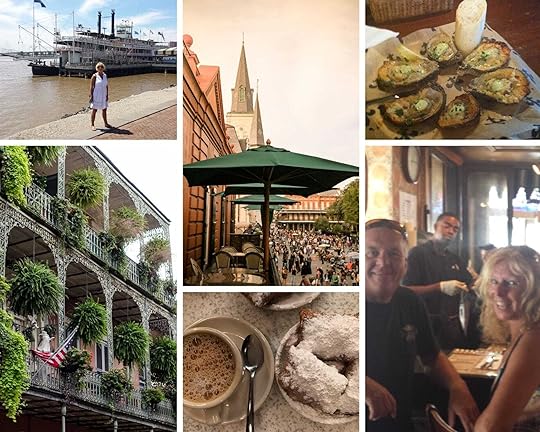 The next morning we did some sightseeing and ate grilled oysters for lunch
The next morning we did some sightseeing and ate grilled oysters for lunchAfter our our delicious lunch of oysters, we headed back to explore Frenchmen Street by day and found enchanting and spooky-looking voodoo shops selling voodoo dolls and where a practising mambo would do a psychic reading for you!
Where the witchcraft shops were filled with candles and potions and strange ingredients for making magic spells to either enrich your life or to exact revenge on your enemies.
Feeling bewitched and compelled by the scent of a heady incense, in a shop called HEX that claims to be a witchery and actually has an ‘Altar of the Dead’ for people to leave notes to their dearly departed, I felt compelled to buy some tarot cards.
I’ve actually always been a bit curious about the tarot and I suppose my thinking was, that in buying tarot cards in the spookiest shop in New Orleans, they must be extra special and even more magical than those you might buy elsewhere.
To this day, I still consult my tarot cards for myself or for friends and I still believe that my cards – bought in that incredibly spooky shop in New Orleans – to be very special and magik!
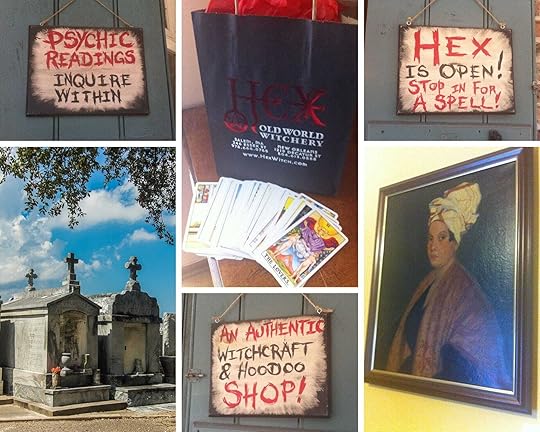 Feeling bewitched, I felt compelled to buy some tarot cards
Crawfish Boil at ‘The Leaf’
Feeling bewitched, I felt compelled to buy some tarot cards
Crawfish Boil at ‘The Leaf’
The Maple Leaf Bar on Oak Street in the ‘Uptown’ part of New Orleans was next up on our Travel Guide to New Orleans.
The Maple Leaf is a world-renowned music venue as well as hosting the best crawfish boil in town.
We were told we shouldn’t miss a ‘Crawfish Boil’ at ‘The Leaf’ as our young musician friend on the Greyhound had called it.
It sounded fantastic but I was also impressed to hear that Bruce Springsteen is often seen popping into The Leaf to ‘jam’ and that many of the bands who regularly played there were Grammy Awards winners!
We got out of our taxi on Oak Street and we were a little nervous, wondering if we’d found the right bar, as we couldn’t hear any music but it turned out that we were a little early.
So, we again paid a cover charge and we bought a drink at the bar, while curiously eyeing the long narrow trestle table covered in a plastic tablecloth placed along the middle of the adjacent room.
Soon lots of people started to arrive, buying drinks and congregating along the length of the table.
Then the musicians arrived and climbed up on stage to do a tune-up.
In no time at all the place was packed out.
Not long after there was a commotion starting at the top of the table and the feeling of something was about to happen.
Everyone had lined up to stand along the length of the table but there were no chairs and no plates and no cutlery.
I was then amazed to see a huge steaming tin bathtub full of food – the Crawfish Boil – was being tossed onto the table.
Several steaming bathtubs later and the table was totally filled with crawfish, potatoes, corn cobs, and sausages, and a feeding frenzy ensued.
If, like me – you are not quite sure what a crawfish is – well it looks and tastes something like a small lobster.
A crawfish boil is a coveted traditional southern meal and an important social event throughout Louisiana USA.
The crawfish – lots of them – are boiled in a giant pot along with potatoes and corn and garlic and sausage and then everything is literally thrown onto the table for people to eat with their hands and with absolute gusto.
Classic Louisiana Bayou Crawfish Boil RecipeOnce the seasoned water comes to a boil in a large tin bath, add the potatoes, corn, garlic, and sausage.
Cover and cook for 10 minutes. Add the crawfish, cover, and cook for 3 minutes.
Turn off the heat and allow the pot to sit, covered, for 10 minutes.
Serve to the hungry masses by tipping the meal onto a scrubbed clean wooden table. No cutlery necessary!
It was all kinds of crazy to eat standing up and with your hands but it also looked fun!
Especially after a fellow diner had seen my confused expression and kindly demonstrated the correct and the quickest way to eat the crawfish.
First, you pull off the head and discard it (on this occasion that’s onto the floor!) and then you suck on the headless body to extract the juicy stock then you quickly peel the shell and pop the crawfish meat straight into your mouth.
I can tell you it’s a sticky and messy business!
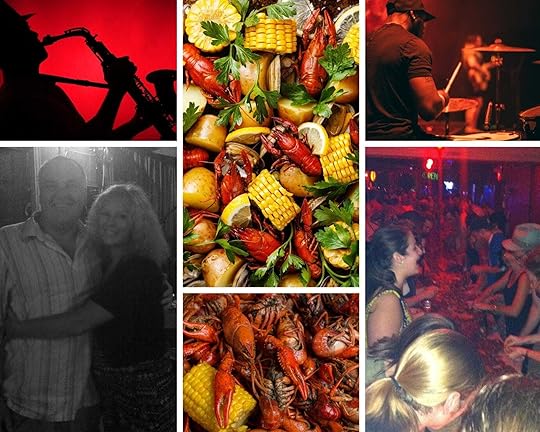 A crawfish boil is a traditional southern meal and an important social event in Louisiana USA
A crawfish boil is a traditional southern meal and an important social event in Louisiana USAAfter the food frenzy was over and the mess quickly cleaned up and the floor brushed and wet mopped, while we had more drinks at the bar, the band started up and we danced the night away in true Maple Leaf style. It was fantastic.
We had booked a taxi at the bar to take us back to our hotel around 10.30 pm.
We usually like to walk around to get a great feel for places and because we enjoy walking, but to be honest, New Orleans at night especially is not the safest of places for tourists.
I would suggest that you ask your hotel to tell you the safest routes for walking in the area so you don’t end up getting lost.
It’s usually about keeping to the main roads and the busiest well-lit streets.
Also, do ask your hotel receptionist for some local taxi numbers that they would recommend to you.
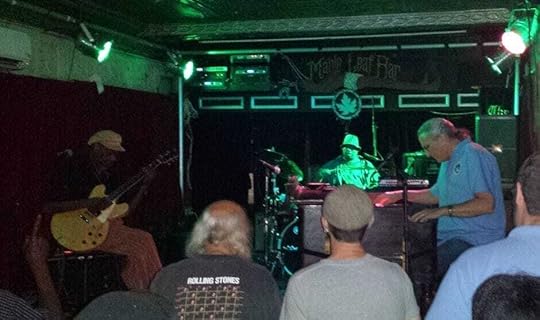 Dancing the night away in true Maple Leaf style!
IRENE’S PLACE
Dancing the night away in true Maple Leaf style!
IRENE’S PLACE
Irene’s Place is a highly regarded ‘secret’ little Italian/French restaurant just a short walk from our hotel at 529 Bienville Street and it was here that we finished off our wonderful stay in New Orleans.
On the outside, with a small swinging sign and modest canopy, Irene’s looks unpretentious – but don’t be fooled – it’s the hottest ticket in town.
Inside the atmosphere is of old-world decadence, the food is delicious, and the wine list is fabulous.
The restaurant opens at 5 p.m. from Tuesday to Saturday.
But do be warned that it’s so popular that’s almost impossible to get a table.
I’d recommend booking in advance and you can do so easily via Irene’s website.
We went early on spec and we were lucky to get a table.
If you arrive and find it busy, you can always choose to wait, and enjoy having a glass of wine at the bar.
 Enjoying the best of New Orleans!
THE BEST EXPERIENCES IN NEW ORLEANS
Enjoying the best of New Orleans!
THE BEST EXPERIENCES IN NEW ORLEANS
New Orleans is known as the home of jazz, blues, oyster bars, and voodoo, as well as mardi gras and cajun cuisine.
It was the fabulous recommendations given to us by a young musician during a chance meeting on a bus that led to us having a fantastic Travel Guide to New Orleans.
This personally curated list led us to places that we might not have found in the four days we were in New Orleans like Snug Harbour for legendary jazz and blues music and The Maple Leaf Bar for the experience of an authentic crawfish boil and a unique musical mix of local legends, Grammy Award winners, musical heroes, and up-and-coming talent AND our fabulous last night in NOLA dinner at Irene’s Restaurant.
We chose to stay in the French Quarter because of the old-town atmosphere and the proximity to the places we planned to experience without having to hire a car.
We found the city diverse. It really is a melting pot of culture and hedonism!
Bourbon Street was quite a shock but the rest of our New Orleans experience was just as I’d imagined if not even better.
We stayed a total of four nights in The Big Easy and made the most of our time so this was a long enough stay for us.
YOU may have other reasons to visit New Orleans: The Carnival referred to as Mardi Gras, The New Orleans Jazz and Heritage Festival commonly known as ‘Jazz Fest’, the Voodoo Experience aka ‘Voodoo Fest’, The Essence Music Festival or the Tennessee Williams Literary Festival.
 Jazz Funeral… dying to come in!
Jazz Funeral… dying to come in!New Orleans is like nowhere else I’ve ever been.
Have you ever been to New Orleans or are you planning to go?
What do you think of this insider’s itinerary for The French Quarter?
Leave a comment and let me know!
You can find out about my book NOLA that I was researching during my visit to New Orleans and all my other bestselling romantic adventure novels – including The Backpacking Housewife series – on my Books Page.
 GET NOLA ON AMAZON
GET NOLA ON AMAZONTHE BACKPACKING HOUSEWIFE RECOMMENDS TRAVEL INSURANCE
GET A NO OBLIGATION QUOTE TODAY
The post An Insider’s Travel Guide to New Orleans! appeared first on The Backpacking Housewife.
December 12, 2024
New Orleans – Haunted Secrets of The French Quarter
New Orleans French Quarter is famous for being the birthplace of jazz music, for its Mardi Gras, and for its Cajun and Creole cuisine, but did you know that New Orleans is also known as one of the most haunted cities in the world?
This makes New Orleans, Louisiana, USA, with its eerie beauty, haunted locations, and cultural acceptance of the supernatural, a top travel destination for anyone looking to explore the world of ghosts and spirits, voodoo legends, and weird phenomenon!
The city’s mix of French, Spanish, and African influences, combined with its tumultuous history of slavery, epidemics, and natural disasters, has made it a hotspot for strange sightings and ghost stories.
Indeed, my own stay in New Orleans French Quarter was inspired by spooky stories.
As a writer, I was using my visit to New Orleans as a research trip for my romantic paranormal adventure novel NOLA.
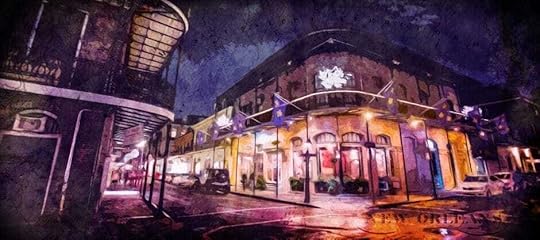 New Orleans – one of the most haunted cities in the world
New Orleans – one of the most haunted cities in the worldTABLE OF CONTENTS
NEW ORLEANS – HAUNTED SECRETS OF THE FRENCH QUARTERThe Voodoo Queen of New OrleansTAKE A GHOST TOURMY TIPS FOR GHOST HUNTING IN NEW ORLEANSSPOOKY REASONS TO EXPLORE NEW ORLEANSMOST HAUNTED PLACES IN NEW ORLEANSWHERE TO STAY IN THE FRENCH QUARTER The Voodoo Queen of New OrleansIn my story, my fictional heroine travels to New Orleans to meet her fiancé’s quirky N’Awlin’s family who live in a spooky old house in the French Quarter.
The research for this book involved me staying for four nights in a wonderful old hotel in the French Quarter while exploring the history and the mystery behind a woman called Marie Laveau otherwise known as The Voodoo Queen of New Orleans.
Also, as part of my plot features a very famous 1920’s painting of Marie Laveau, as part of my itinerary I was planning a trip to the Louisiana State Museum in Jackson Square where the painting was on display to the public.
This portrait of Marie Laveau by Frank Schneider is said to be inspired by a much earlier (1835) painting by the artist George Catlin that is now lost.
I’d already done a lot of meticulous research on the painting online but up until that point I had never actually seen it for myself in real life and I really needed to see it to feel all the feels associated with experiencing authentic and original art.
 I’m excited to be standing in front of the painting of Marie Laveau!
I’m excited to be standing in front of the painting of Marie Laveau!But you’ll have to read my (fictional) book NOLA to find out exactly where the missing original eventually turns up!
You can find out more about my New Orleans inspired novel entitled NOLA and my other books including my Backpacking Housewife Series of romantic adventure books published by HarperCollins on my Book Page.

I had a truly fabulous time in New Orleans and absolutely loved our stay at the gorgeous Chateau Hotel on Chartres Street, where our beautiful room was on a high floor – basically up in the attic – and incredibly atmospheric and spooky, with dark oak furniture and a four-poster bed!
The historic French Quarter seemed to be in the centre of the all the action as far as we were concerned and so the backpacking husband and I were keen to drop off our luggage and explore the surrounding old neighbourhood.
These include Bourbon Steet – in the hope of catching a Jazz Funeral – but my first impressions of Bourbon Street where of shock and horror which you can read about in my post An Insider’s Itinerary and Travel Guide to New Orleans!
Jackson Square – originally known as Place D’Armes – is fabulously awash with street entertainers, tarot readers, and mystics.
And, of course, on Jackson Square there’s the famous séance room at Muriel’s Jackson Square.
We explored Decatur Street next to find antique shops, vintage boutiques, and strange emporiums, including the bewitching shop called HEX that claims to be a witchery where you can buy spells and tarot cards and leave a note for your dearly departed loved ones in the afterlife at the shop’s ‘Altar of the Dead’.
I bought a spell and tarot cards which I am convinced are especially ‘spiritual’ having bought them from such a spooky place!
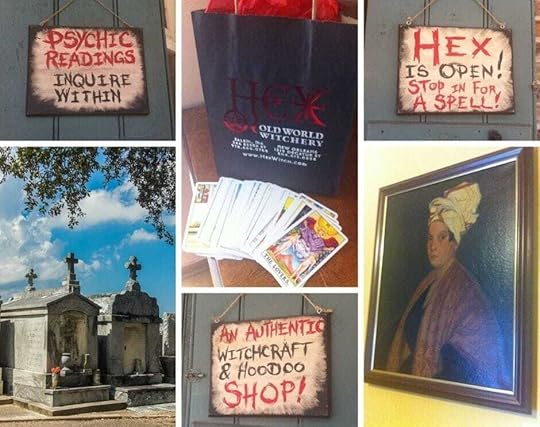 Antique shops, vintage boutiques, and strange emporiums!
TAKE A GHOST TOUR
Antique shops, vintage boutiques, and strange emporiums!
TAKE A GHOST TOUR
Beyond the festive masks of Mardi Gras, New Orleans has a reputation of being the most haunted city on earth, because of its horrifying history complete with executions, voodoo queens, unspeakable tragedy, and terrifying hauntings.
I believe the best and most fun way to explore the spooky side of New Orleans is to join an authentic organised ghost tour.
US Ghost Adventures provides entertaining, historic, and authentic ghost tours and experiences across the United States’ most haunted cities.
I recommend taking a ghost tour in New Orleans with an local guide who has expert local knowledge and who can share first-hand accounts, local legends, and a deep understanding of the city’s paranormal activities for an enhanced experience.
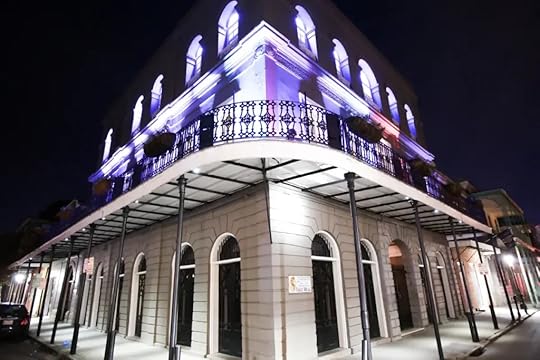 The Haunted LaLaurie Mansion – Copyright US Ghost Adventures
The Haunted LaLaurie Mansion – Copyright US Ghost AdventuresChoose your unique New Orleans experience and take a French Quarter Ghost Tour to discover why the dead are doomed to relive their past for eternity and to also uncover a higher chance of experiencing something out of the ordinary.
MY TIPS FOR GHOST HUNTING IN NEW ORLEANSJOIN A TOUR: (See above!) New Orleans offers ghost hunters not just a chance for supernatural encounters but also a rich cultural and historical experience so whether you’re drawn by the stories of the dead or the city’s vibrant charm, a ghost hunt in New Orleans is as much about connecting with its past as it is about seeking the paranormal.
RESPECT THE SPIRITS: Whether visiting cemeteries or other haunted locations, show respect to the spirits and the history of the city.
STAY IN A HAUNTED HOTEL: Hotels like Chateau Hotel where we stayed (and hardly slept as I found it so excitingly spooky) with its spooky attic room and four-poster bed certainly enhanced my eerie experience in The Big Easy.
There’s also the Bourbon Orleans Hotel and Hotel Monteleone which are reputed to offer a chance for you to experience paranormal activity first hand.
PARANORMAL INVESTIGATIONS: Many of the venues in the historic French Quarter and Garden District welcome ghost hunters with open arms, often hosting special investigation nights, or providing access to paranormal equipment.
SPIRITUAL SHOPS: I loved exploring the spooky shops where you can find tools for your spirit hunt, from sage to spells and talismans, in the city’s many voodoo and occult shops.
 New Orleans is about connecting with its past as it is about seeking the paranormal
SPOOKY REASONS TO EXPLORE NEW ORLEANS
New Orleans is about connecting with its past as it is about seeking the paranormal
SPOOKY REASONS TO EXPLORE NEW ORLEANS
New Orleans, with its rich history, tragic past, and a cultural fascination with the supernatural – is a city that embraces its haunted history so here are my spooky suggestions for reasons to explore New Orleans – if you, like me, just happen to be as fascinated by the supernatural!
A TRAGIC HISTORY: Founded in 1718, New Orleans has a long and tumultuous history, including battles, fires, and colonial rivalries. The city’s role in the transatlantic slave trade left behind stories of suffering and unrest, with many enslaved people believed to haunt the places where they were mistreated.
VOODOO INFLUENCE: Voodoo, brought to New Orleans by enslaved Africans, has a deep connection to the city’s culture and this has cultivated an atmosphere where the supernatural is embraced rather than feared.
The religion blends West African beliefs with Catholicism and Haitian Vodou.
Marie Laveau, the “Voodoo Queen of New Orleans,” is one of the most famous figures tied to the city’s voodoo history and many believe her spirit still lingers in St. Louis Cemetery No. 1 where her tomb is a pilgrimage site for those seeking her blessings or wishing to connect with voodoo traditions.
HAUNTINGS AND GHOST STORIES: New Orleans is filled with tales of restless spirits. Many buildings in the French Quarter and beyond are said to be haunted due to tragic events, from murders to epidemics like yellow fever.
The dimly lit streets, wrought iron balconies, and historical ambiance set the perfect mood for a ghost hunt especially at Halloween and during other festivals, which amplify the city’s supernatural vibes, that have led to visitors and locals alike reporting apparitions, cold spots, disembodied voices, and other unexplained phenomena.
HAUNTINGLY BEAUTIFUL CEMETERIES: The city’s famous Cities of the Dead are eerie and atmospheric and their unique design of above ground tombs, shaped by the high-water table, adds to the ghostly ambiance.
STRANGE SIGHTINGS: From spectral carriages rolling through the streets to ghostly apparitions seen in windows, locals and tourists alike often report paranormal encounters and sightings of shadowy figures, glowing orbs, and inexplicable noises.
LOCATIONS OF TRAGIC EVENTS: Infamous locations include The LaLaurie Tragedy – a story of unimaginable cruelty that continues to captivate ghost hunters and The Sultan’s Palace – a chilling tale of murder that resonates with those looking for macabre experiences.
Mass deaths from fever and epidemics have left behind an imprint that many claim still lingers in places like the St. Louis Cemeteries. Hurricane Katrina and earlier disasters have left emotional imprints, with some believing they contribute to spiritual unrest.
 New Orleans – Hauntingly beautiful cemeteries
MOST HAUNTED PLACES IN NEW ORLEANS
New Orleans – Hauntingly beautiful cemeteries
MOST HAUNTED PLACES IN NEW ORLEANS
LALAURIE MANSION: Location: 1140 Royal Street, French Quarter. Perhaps the most infamous haunted house in New Orleans, this mansion was the home of Madame Delphine LaLaurie, a wealthy socialite known for her brutal treatment of enslaved people. After a fire revealed her horrific abuses, she fled, but it’s said the spirits of her victims still linger in the house.
Reported activities include: the sounds of chains dragging, apparitions of tortured souls, and a generally oppressive atmosphere.
ST.LOUIS CEMETERY NO. 1: Location: 425 Basin Street. The oldest cemetery in New Orleans, it’s famous for its above-ground tombs and the resting place of Marie Laveau.
Reported activities include: visitors claim to see ghostly figures, hear whispered voices and feel an eerie presence.
HOTEL MONTELEONE: Location: 214 Royal Street. A historic hotel known for its ghostly residents, including a young boy named Maurice who passed away there.
Reported activities include: moving elevators, phantom children playing, and cold spots.
THE HAUNTED SULTAN’S PALACE: Location: 716 Dauphine Street. Once the site of a grisly massacre, legend says the house belonged to a mysterious “sultan” who was brutally murdered along with his harem.
Reported activities include: the scent of incense, ghostly figures, and unexplainable noises.
MURIEL’S JACKSON SQUARE: Location: 801 Chartres Street. This restaurant is haunted by its former owner, Pierre Antoine Lepardi Jourdan, who committed suicide after losing the building in a card game.
Reported activities include: guests report moving objects, disembodied voices, and feelings of being watched.
PIRATES ALLEY: Location: Adjacent to St. Louis Cathedral. Said to be haunted by the ghost of Jean Lafitte, a notorious pirate who may have frequented the area.
Reported Activities include: spectral sightings of Lafitte and shadowy figures.
THE OLD URSULINE CONVENT: Location: 1100 Chartres Street. Reputed as the oldest building in the Mississippi Valley, the convent is rumoured to have ties to vampires and mysterious deaths.
Reported Activities include: whispered prayers and ghostly nuns seen in the halls.
THE OMNI ROYAL ORLEANS HOTEL: Location: 621 St. Louis Street. This luxurious hotel has a dark past, with numerous accounts of ghostly encounters.
Reported activities include: ghostly children and the spirit of a Confederate soldier.
CHATEAU HOTEL: Location: 1001 Chartres Street. This three-star hotel is where I stayed during my four nights in New Orleans. It’s in a great location just two blocks from Bourbon Street and The French Market (for their Creole char-grilled garlic and herb infused oysters!) and a short walk to Jackson Square. It doesn’t claim to be haunted and yet where isn’t in the French Quarter?
Reported activities: I definitely sensed a spiritual and haunting presence in our attic bedroom and so I’m including it here in my list of Most Haunted Places!
 My own stay in New Orleans French Quarter was inspired by spooky stories
WHERE TO STAY IN THE FRENCH QUARTER
My own stay in New Orleans French Quarter was inspired by spooky stories
WHERE TO STAY IN THE FRENCH QUARTER
FIND YOUR PERFECT PLACE TO STAY IN THE FRENCH QUARTER USING THIS INTERACTIVE MAP
Have you been to New Orleans?
Are you too fascinated by its spooky side?
Are you interested in taking a ghost tour?
Let me know!
You might also enjoy my post An Insider’s Itinerary and Travel Guide to New Orleans!
THE BACKPACKING HOUSEWIFE RECOMMENDS TRAVEL INSURANCE
GET A NO OBLIGATUON QUOTE FROM WORLD NOMADS TODAY

The post New Orleans – Haunted Secrets of The French Quarter appeared first on The Backpacking Housewife.
November 28, 2024
South Korea: Duryu Park Daegu
Daegu Duryu Park (대구두류공원): Did you know there’s a place in South Korea where ancient Buddhist temples share sacred space with a modern theme park and a towering observatory?
Yes, really, and that place is the City of Daegu in South Korea.
It’s really easy to include Daegu in your South Korean travel itinerary as it’s a journey of less than two hours from Seoul to Daegu by KTX Train on the Seoul to Busan line with over 60 trains running daily.
Daegu is South Korea’s third largest city after Seoul and Busan.
Daegu sits in a geographical bowl between the foothills of two mountain ranges including the scenic Apsan Mountain and Palgongsan Mountain reached by cable cars and with its renowned mountainside temple retreat at Donghwasa Temple.
This urban oasis offers visitors an unexpected mix of attractions that capture both Korea’s rich heritage and its modern vibrancy.
Do see my popular post on my Top 10 Things To Do in Daegu South Korea.
One of those unexpected attractions is Duryu Park – Daegu’s crown jewel – masterfully blending traditional Korean culture with contemporary entertainment.
From the cherry blossom-lined paths in springtime to the revolving restaurant atop Daegu Tower to the thrilling rides at E-World Theme Park, Duryu Park Daegu absolutely proves that some of South Korea’s most captivating experiences lie beyond the capital city of Seoul’s busy streets.
Let me offer you the ultimate visitors guide to Duryu Park Daegu!
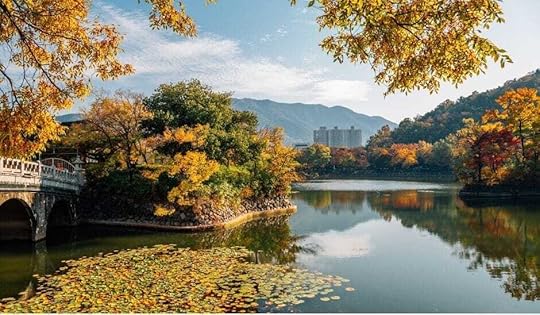 Duryu Park is Daegu’s crown jewel…
Duryu Park is Daegu’s crown jewel…TABLE OF CONTENTS
INTRODUCTION TO DURYU PARKATTRACTIONS AND ACTIVITIESE-WORLD AND DAEGU TOWERCultural and Educational FacilitiesSports and RecreationBest Times to Visit Duryu Park DaeguGetting To DaeguDuryu Park Visitor ServicesWhere to Stay Near to Duryu Park DaeguLocal Dining ExperiencesSeasonal CharmsMY TOP THREE THINGS TO DO IN DURYU PARK DAEGUMaking the Most of Your VisitFacilities and ServicesYour Perfect Day at Duryu Park Awaits INTRODUCTION TO DURYU PARKDuryu Park offers visitors a perfect blend of natural beauty and modern attractions, making it a must-visit destination for travellers and tourists exploring South Korea.
The iconic Daegu Tower, one of South Korea’s tallest observatory structures, dominates the skyline and serves as the park’s most recognizable landmark.
 The iconic Daegu Tower dominates the skyline…
The iconic Daegu Tower dominates the skyline…Cultural enthusiasts will appreciate the presence of historical temples like Daeseong-sa and Geumyong-sa that add a touch of traditional Korean heritage to the park’s modern amenities.
These spiritual sanctuaries provide a stark contrast to the modern attractions, creating a unique blend of old and new within the park’s boundaries.
Throughout the year, Duryu Park transforms with the changing seasons, each offering its own unique charm.
In autumn, the foliage creates a mesmerizing tapestry of warm colours, providing picture-perfect backdrops for memorable photos.
Spring brings a spectacular display of cherry blossoms that blanket the park in delicate pink hues, drawing crowds of visitors eager to experience this natural phenomenon.
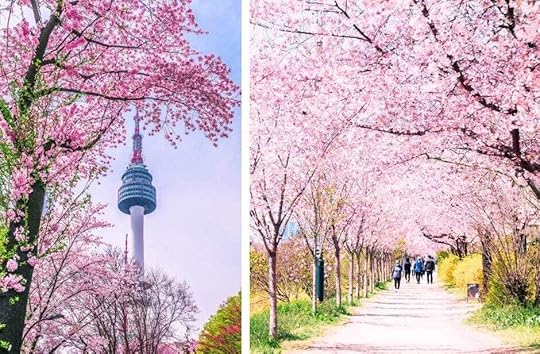 ATTRACTIONS AND ACTIVITIES
ATTRACTIONS AND ACTIVITIES
The park’s attractions cater to diverse interests, from the thrilling E-World theme park to the sophisticated Daegu Culture and Arts Centre.
With free admission and excellent parking facilities, Duryu Park welcomes visitors to explore its grounds at any time.
Information services in multiple languages ensure a comfortable experience for all international travellers.
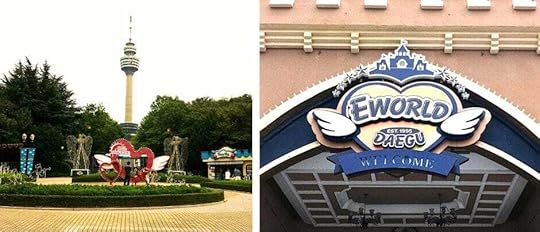 Thrilling E-World theme park and the Daegu Tower
E-WORLD AND DAEGU TOWER
Thrilling E-World theme park and the Daegu Tower
E-WORLD AND DAEGU TOWER
I love to take our grandson to E-World within Duryu Park.
It’s a modern theme park complex offering thrilling rides and all kinds of fun and entertainment for all age groups.
Towering above the park is the iconic Daegu Tower where you can enjoy a unique dining experience at the tower’s revolving restaurant while taking in the stunning cityscape from both the restaurant and its observation deck.
There is also a really – a favourite of ours – good family buffet-style restaurant beneath the tower.
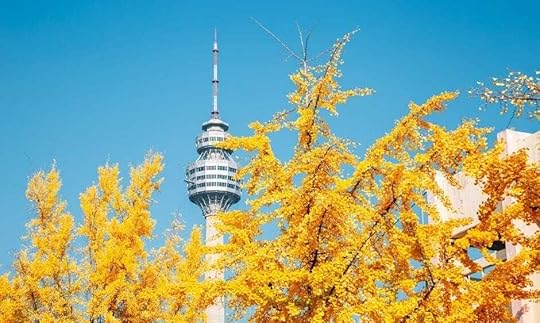 Towering above the park is the iconic Daegu Tower
Cultural and Educational Facilities
Towering above the park is the iconic Daegu Tower
Cultural and Educational Facilities
The park houses several cultural landmarks, including the Duryu Library, which serves as an educational hub for locals and visitors alike.
Notable monuments like the Memorial Tower stand as testament to the city’s historical significance and offers quiet spaces for remembrance.
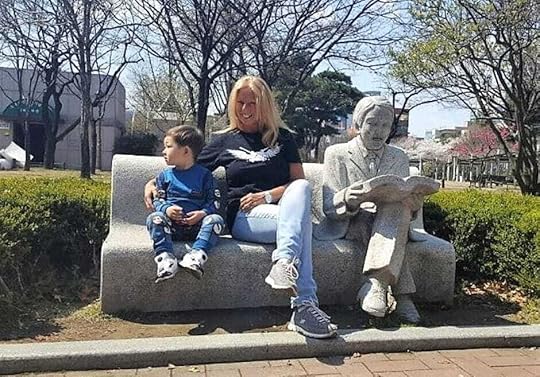 With my grandson outside Daegu Library
Sports and Recreation
With my grandson outside Daegu Library
Sports and Recreation
Active visitors will appreciate the park’s extensive and expansive recreational facilities.
After opening on October 1977, the park added a soccer field, a baseball field, tennis courts, a swimming pool, a judo centre and a skating rink.
 Colourful Daegu!
Best Times to Visit Duryu Park Daegu
Colourful Daegu!
Best Times to Visit Duryu Park Daegu
Spring (March to May) offers the most spectacular views when cherry blossoms paint the park in delicate pink hues.
September brings comfortable temperatures between 59°F to 77°F, perfect for outdoor activities and exploring the park’s attractions.
Autumn months showcase vibrant foliage, creating stunning photo opportunities around the park’s walking trails.
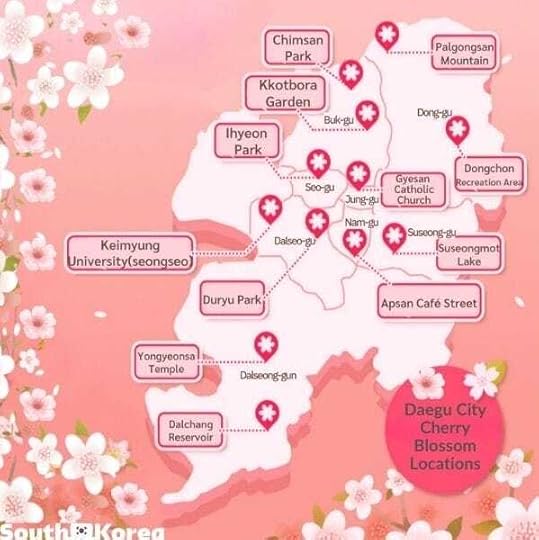 Duryu Park Daegu for Cherry Blossom Season
Getting To Daegu
Duryu Park Daegu for Cherry Blossom Season
Getting To Daegu
The park is easily accessible via Daegu’s efficient public transportation system.
Take the subway to Duryu Station (Line 2) and exit through Gate 14, which leads directly to the park entrance.
Local buses and subway also service the area frequently, with several stops near the park’s main gates.
If you’re arriving from other cities then both the express bus terminals and Dongdaegu Train Station offer convenient connections to the park area.
My travel tip for travel to South Korea is to include the City of Daegu in your travel itinerary!

Duryu Park Visitor Services
The Daegu Tourist Information Center, located near the park, provides English-speaking assistance and free maps to help you navigate the grounds.
Transportation cards are recommended for savings on subway and bus fares when exploring the area.
The centre can also help with train or plane ticket reservations for your onward journey.
With such convenient access and comprehensive facilities, many visitors choose to stay in nearby accommodations, allowing them to fully experience both daytime activities and evening attractions like the illuminated Daegu Tower.
 The illuminated Daegu Tower.
The illuminated Daegu Tower. Where to Stay Near to Duryu Park Daegu
Where to Stay Near to Duryu Park Daegu
I normally stay with family in Daegu but on occasion have also used a hotel in a central location.
For visitors wanting to fully experience Duryu Park, several convenient accommodation options dot the surrounding area.
Many hotels offer modern amenities and comfortable rooms perfect for both leisure and business travellers.
Those seeking a more traditional experience should perhaps consider guesthouses where you can immerse yourself in authentic Korean architecture and hospitality.
There are of course many stylish and upscale accomodations that provide contemporary comfort with easy park access.
Find your perfect place to stay in Daegu using this interactive map
Local Dining ExperiencesThe area surrounding Duryu Park serves up a delightful mix of Korean cuisine and international flavours.
Street food vendors scattered throughout the park offer classic Korean snacks perfect for a quick bite between attractions.
Watch for seasonal food festivals that bring local delicacies right to the park grounds, especially during cherry blossom season and autumn celebrations.
While exploring the park’s vicinity, you’ll discover numerous family-run restaurants serving authentic Korean dishes like bibimbap and samgyeopsal.
I particularly enjoy and recommend Korean Barbeque restaurants and there are plenty to be found in Daegu.
The Daegu Tower’s revolving restaurant provides a unique dining experience with panoramic city views, making it an ideal choice for special occasions or romantic dinners.
To make the most of your visit, consider timing your stay around seasonal events.
Spring visitors can enjoy picnicking under cherry blossoms, while autumn guests might catch the vibrant food and cultural festivals that showcase Daegu’s culinary heritage.
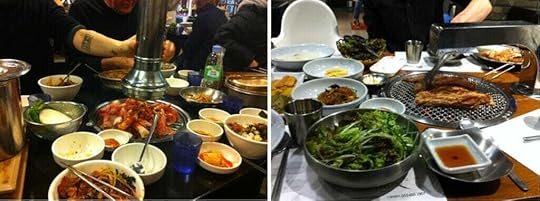 I particularly enjoy and recommend Korean Barbeque
Seasonal Charms
I particularly enjoy and recommend Korean Barbeque
Seasonal Charms
Each season at Duryu Park offers unique experiences worth capturing.
Spring dazzles with cherry blossoms creating pink canopies perfect for photography.
Summer brings lush greenery and vibrant flowers, ideal for morning walks or evening strolls.
Fall transforms the park into a canvas of golden and crimson hues, while winter offers serene landscapes and crisp air perfect for outdoor exercise.
 Early springtime in Duryu Park with my husband and grandson and cherry blossoms
MY TOP THREE THINGS TO DO IN DURYU PARK DAEGU
Early springtime in Duryu Park with my husband and grandson and cherry blossoms
MY TOP THREE THINGS TO DO IN DURYU PARK DAEGU
See the cherry blossoms in full bloom in springtime.
Head to the Daegu Tower for the best views of the cityscape.
Take our grandson to E-World in Duryu Park Daegu.
 We love to take our grandson to E-World in Duryu Park Daegu
Making the Most of Your Visit
We love to take our grandson to E-World in Duryu Park Daegu
Making the Most of Your Visit
To enhance your park experience, aim to visit during early morning or late afternoon hours when crowds are less and lighting is ideal for photos.
The park’s vast grounds are best explored with comfortable walking shoes, and bringing a picnic blanket allows you to relax on the grass while enjoying the scenery.
Don’t forget to check local events as the park frequently hosts cultural performances and seasonal festivals.
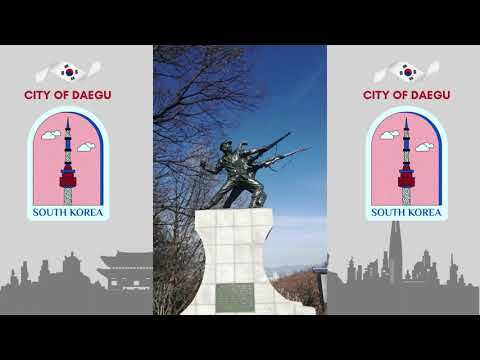
Facilities and Services
Duryu Park’s recreational facilities include clean restrooms conveniently located throughout the grounds, and ample parking spaces accommodate both cars and tour buses.
Information kiosks provide maps and guidance in multiple languages, making navigation effortless for international visitors.
The park’s extensive network of walking paths is well-maintained and clearly marked, allowing visitors of all abilities to explore with ease.
Whether you’re seeking active recreation, cultural enrichment, or peaceful contemplation, Duryu Park’s year-round accessibility and diverse attractions make it an essential stop on any Daegu itinerary.
The park’s blend of natural beauty and modern conveniences creates an inviting space where visitors can fully immerse themselves in Korean leisure culture.
 Duryu Park is easily accessible via Daegu’s efficient public transportation system
Your Perfect Day at Duryu Park Awaits
Duryu Park is easily accessible via Daegu’s efficient public transportation system
Your Perfect Day at Duryu Park Awaits
Duryu Park stands as a testament to South Korea’s ability to harmoniously blend the old with the new, offering visitors a unique glimpse into both traditional Korean culture and modern entertainment.
Whether you’re watching the seasons paint the landscape in vibrant colours, seeking thrills at E-World, or finding peace in ancient temple grounds, this urban paradise has something for everyone.
As you plan your visit to Daegu, remember that Duryu Park isn’t just a destination – it’s an experience that showcases the very essence of contemporary South Korea.
With its accessibility and attractions and year-round appeal, Duryu Park deserves a prime spot on your Korean travel itinerary.
 The City of Daegu sits in a geographical bowl between two mountains.
The City of Daegu sits in a geographical bowl between two mountains.Are you planning to travel to South Korea?
Did you know about Daegu?
Would you like to explore Duryu Park Daegu?
Let me know!
THE BACKPACKING HOUSEWIFE RECOMMENDS TRAVEL INSURANCE
GET A NO-OBLIGATION QUOTE FROM WORLD NOMADS TODAY

The post South Korea: Duryu Park Daegu appeared first on The Backpacking Housewife.
November 24, 2024
Over 50’s Guide To Taking A Sabbatical
The Over 50’s Guide To Taking a Midlife Sabbatical: Are you over the age of 50 and starting to worry about never having the time nor opportunity to achieve your own personal dreams and ambitions in life?
Are you waiting for retirement – early or otherwise – to fulfil a later-in-life wish list?
Are you feeling frustrated in your midlife and dreaming of doing something One Day?
Maybe you’re an aspiring writer who’s been putting off starting a novel until you can go on a writer’s retreat?
Perhaps you have a part time hobby to which you’d love to devote more time?
Or there’s a skill you’ve always want to practice but put on hold for when you have more time?
Are you suppressing wanderlust and an ambition to travel and have adventures in far off lands?
What’s still on your bucket list and waiting to be ticked off?
Well, dear reader, if I can offer you just one piece of advice – based on what I’ve learned – it’s not to wait until a ‘retirement age’ to reach out for your personal dreams and achieve life ambitions.
Because I truly believe that putting off doing something important to you could be a mistake.
Because, if not now, then when?
How do you know you’ll still have your health and mobility in later life?
There are no guarantees.
Of course, not everyone can afford to retire early and head off in a new direction in their midlife.
But, as an alternative to taking early retirement, more people in their midlife are discovering the power of pressing pause as a far more achievable option.
There is a growing number of those of us aged over 50 who are challenging the status quo by embracing an unconventional path: the midlife sabbatical.
So, let’s look at how taking a sabbatical in your midlife might help you make your One Day your Day One.
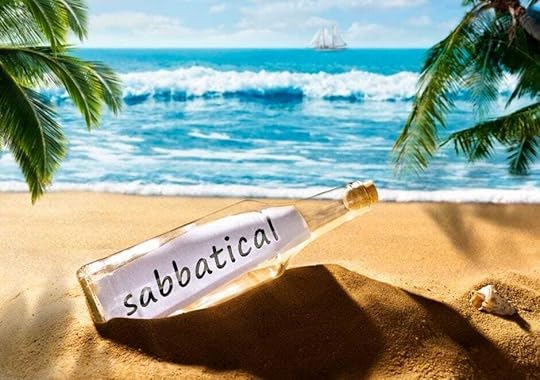 Taking a midlife sabbatical could help your One Day become your Day One…
Taking a midlife sabbatical could help your One Day become your Day One…TABLE OF CONTENTS
Over 50’s Guide To Taking A SabbaticalWHAT IS A MIDLIFE SABBATICALHOW LONG DOES A SABBATICAL NEED TO BE?AN UNCONVENTIONAL PATHBENEFITS OF MIDLIFE SABBATICALSFINANCIAL CONSIDERATIONSCHALLENGES AND MENTAL BARRIERSIMPACT ON LIFESTYLE CHOICESFUTURE TRENDS AND PREDICTIONSEMBRACING YOUR MIDLIFE RESET WHAT IS A MIDLIFE SABBATICALThink of it as an extended career break – a strategic pause – from your daily grind.
This transformative midlife trend isn’t just about escaping the daily routine – it’s about reshaping how we think about careers, our personal growth, and life satisfaction after we’ve reached 50.
A growing movement of professionals have discovered that taking a midlife break isn’t just feasible – it’s transformative.
Whether it’s to combat burnout, spend quality time with loved ones, or finally pursue those dreams you’ve put on hold, a sabbatical offers the perfect opportunity to reset and recharge.
For those over 50, after perhaps spending years building careers and raising families, you have the wisdom of experience and, often, the financial stability to take a meaningful pause that lets you step back from work and focus on what truly matters to you.
You’ve earned the right to recalibrate your life and so a midlife sabbatical makes perfect sense.
 Recalibrate your life with a sabbatical…
HOW LONG DOES A SABBATICAL NEED TO BE?
Recalibrate your life with a sabbatical…
HOW LONG DOES A SABBATICAL NEED TO BE?
Taking a midlife sabbatical as an extended career break doesn’t have to mean taking a midlife gap year.
Typically, a sabbatical differs from a holiday/vacation in that it can encompass many weeks – or at least perhaps a series of periodic mini-breaks throughout the year or over several months – that are dedicated to personal growth and exploration.
If you have the benefit of a flexible working arrangements this can offer another fantastic option.
Negotiating a four-day work week to free up long weekends or remote work possibilities can also provide that much-needed breathing space without stepping away from work entirely.
Some over-50 professionals find success in job-sharing or consulting roles that offer more control over their time.
Looking for amazing experiences or something more adventurous then consider working abroad or volunteering as it’s a brilliant way to combine income with cultural immersion.
Organizations often seek experienced professionals for short-term international assignments.
Or, you can take inspiration from those who’ve planned focussed trips and creative domestic adventures, like touring all the national parks or following a favourite sport.
For example, I have a couple of motor-racing-mad friends who took a fabulous ten-month career break in order to follow Formula One Racing across Asia for an entire season.
While, over a period of six-months while in the Caribbean, my backpacking husband pursued his dream of training for professional scuba diving qualifications by doing a PADI Dive Master programme at a Pro-Dive Centre.
Then, the following year, while on Koh Tao in Thailand, he went on to do his PADI Instructor.
A year on from then he went on to achieve his PADI IDC Staff Instructor qualification.
I, myself, while both travelling and housesitting, found the time to achieve my own dream of writing my series of Backpacking Housewife novels that are published by HarperCollins.
 I took time out to achieve my own dream of writing novels…
AN UNCONVENTIONAL PATH
I took time out to achieve my own dream of writing novels…
AN UNCONVENTIONAL PATH
Right now, with decades of work experience under our belts and often greater financial stability, more of us in our 50s and indeed in our 60s are looking for reasons to embrace travel and the idea of a purposeful pause.
Maybe the 2020/21 pandemic has been a wake-up call, prompting many to reassess their priorities and consider taking extended breaks from work.
Recent studies show this isn’t just a passing trend.
Whether it’s a few months or a full year, many over 50’s are discovering that a career break at this stage offers the perfect blend of experience and opportunity.
 A career break offers the perfect blend of experience and opportunity…
BENEFITS OF MIDLIFE SABBATICALS
A career break offers the perfect blend of experience and opportunity…
BENEFITS OF MIDLIFE SABBATICALS
Taking a midlife sabbatical can transform your life in remarkable ways.
First and foremost, it offers immediate relief from workplace stress and helps prevent burnout – something many over-50 professionals desperately need.
You’ll finally have time to breathe, reflect, and reassess what truly matters in your life.
This extended break creates space for meaningful connections with family and friends.
Imagine having uninterrupted quality time with loved ones, free from the usual work-related distractions.
Plus, you’ll have the freedom to explore new interests and rekindle old passions that may have been gathering dust during your busy career years.
Your physical and mental health can flourish during this time.
Many who take this brave step report feeling rejuvenated, more creative, and better equipped to tackle life’s challenges with fresh perspective.
A sabbatical offers countless opportunities for personal growth.
 Midlife travel has offered me opportunities for personal growth…
FINANCIAL CONSIDERATIONS
Midlife travel has offered me opportunities for personal growth…
FINANCIAL CONSIDERATIONS
Let’s talk money as it’s often the aspect that often makes people hesitate about taking a midlife sabbatical.
Yet, the biggest hurdle isn’t always money but giving yourself permission to step away.
The good news?
With smart planning, your career break doesn’t have to break the bank.
One popular strategy is achieving ‘FIRE’ which stands for Financial Independence Retire Early.
The goal is to achieve financial freedom so that you can live a comfortable lifestyle with enough investments to support your retirement.
Before taking the leap, run projections to understand your financial landscape.
Consider creative approaches to travel – like housesitting abroad or teaching English online – to stretch your sabbatical budget.
Many over-50 professionals find that stepping away from work actually improves their financial habits as they learn to live more intentionally with less.
Worried about how to afford the costs?
Start small. Build a dedicated sabbatical fund through automatic savings transfers.
Remember that a meaningful break doesn’t always mean expensive.
The key is planning ahead and being flexible with your vision.
 The biggest hurdle isn’t always money but giving yourself permission to step away…
CHALLENGES AND MENTAL BARRIERS
The biggest hurdle isn’t always money but giving yourself permission to step away…
CHALLENGES AND MENTAL BARRIERS
Taking a midlife sabbatical isn’t always smooth sailing.
Many over-50 professionals wrestle with common hurdles that can feel overwhelming at first.
Financial worries often top the list and questioning whether savings will stretch far enough.
Or if career opportunities might diminish during the break.
Health concerns can also creep in especially regarding (affiliate link) insurance coverage during time away.
But perhaps the biggest obstacles are psychological.
There’s that nagging voice asking if it’s ‘responsible’ to step away from work at this stage of life.
Society often raises eyebrows at the idea of taking an extended break after 50.
Feelings of guilt about leaving family or work responsibilities behind can be intense.
The key to overcoming these barriers?
Again, as with concern over finances, my advice is to start with small steps.
Connect with others who’ve successfully navigated their own midlife breaks.
Find the right travel insurance to suit your needs and to cover extended travel and (affiliate link) get a quote.
Remember, feeling uncertain is natural, but don’t let fear prevent you from embracing this potentially life-changing opportunity.
You might like to read my post on scary travel horror situations and how to avoid them!
 Common hurdles can feel overwhelming at first…
IMPACT ON LIFESTYLE CHOICES
Common hurdles can feel overwhelming at first…
IMPACT ON LIFESTYLE CHOICES
Taking a midlife sabbatical often sparks profound changes in how you approach life and work.
Many over-50 professionals discover that stepping away from their careers leads to unexpected opportunities.
This was true of the backpacking husband’s scuba diving training which then led to invitations and opportunities to use his new skills on fantastic dive projects around the world.
Some people return to their previous roles with renewed energy, while others pivot entirely, launching consulting businesses or pursuing long-forgotten passions.
Sabbaticals often trigger meaningful career recalibrations that better align with personal values.
The impact extends beyond work.
Sabbatical takers frequently report deeper connections with family, improved health habits, and a clearer sense of purpose.
Many find themselves simplifying their lives, focusing less on material success and more on experiences that bring joy.
Whether it’s learning new skills, travelling, or volunteering, these breaks can influence personal growth that then ripples through every aspect of life.
 Many over 50s discover midlife sabbaticals can lead to unexpected opportunities…
FUTURE TRENDS AND PREDICTIONS
Many over 50s discover midlife sabbaticals can lead to unexpected opportunities…
FUTURE TRENDS AND PREDICTIONS
Looking ahead, maybe midlife sabbaticals are set to become a standard feature of career planning, especially for those over 50 as progressive companies begin to build extended career breaks into their HR policies to boost employee well-being and productivity?
The rise of the FIRE movement is also reshaping how we think about traditional retirement.
Instead of waiting until 65 more professionals are opting for strategic breaks in their careers.
These ‘mini-retirements’ offer the benefits of extended time off while maintaining the option to return to work.
Workplace culture is evolving too because was once seen as a career risk is increasingly viewed as a smart investment in personal development.
I personally believe, that as more over-50’s successfully navigate their midlife gap year and return with renewed purpose, we’re likely to see this trend accelerate.
The future workplace may well consider midlife breaks as natural as taking annual vacation time.
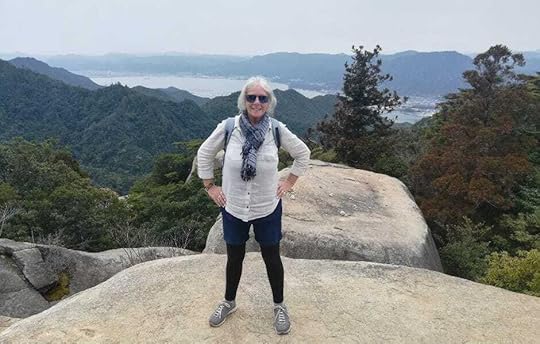 Taking time out (before I get too old!) to hike Mount Misen in Japan…
EMBRACING YOUR MIDLIFE RESET
Taking time out (before I get too old!) to hike Mount Misen in Japan…
EMBRACING YOUR MIDLIFE RESET
The rise of midlife sabbaticals represents more than just a workplace trend as it’s now a cultural shift in how we approach career development and personal fulfilment after 50.
As more midlifer’s share their sabbatical success stories – and companies adapt their policies – taking an intentional break is set to become increasingly accessible and accepted.
Are you over 50 and dreaming of a year-long adventure or considering a shorter break?
What do you plan to do during your sabbatical?
What do you see as the main obstacles/concerns to taking a sabbatical?

THE BACKPACKING HOUSEWIFE RECOMMENDS TRAVEL INSURANCE
GET A NO-OBLIGATION QUOTE FROM WORLD NOMADS TODAY

The post Over 50’s Guide To Taking A Sabbatical appeared first on The Backpacking Housewife.
October 24, 2024
South Korea: Apsan Mountain
Apsan Mountain and the sprawling area of Apsan Park is just outside the City of Daegu in South Korea and is one of my favourite places to visit.
Apsan Park is located where three mountain ranges converge and from the top of Apsan Mountain – and its fabulous observatory deck – you can experience the most amazing panoramic views of Daegu City and its surroundings.
Apsan Park, with its soaring peaks, lush forests, historical landmarks, and serene ambiance, is a sanctuary for both locals and tourists looking for a peaceful escape from urban life and is an easy day trip from Daegu City.
So, whether you’re seeking adventure, peace, or a deep connection with nature, Apsan Mountain Park provides all of that and more. It’s a must-visit destination for travellers exploring South Korea!
Travel with me to Apsan Mountain Park!
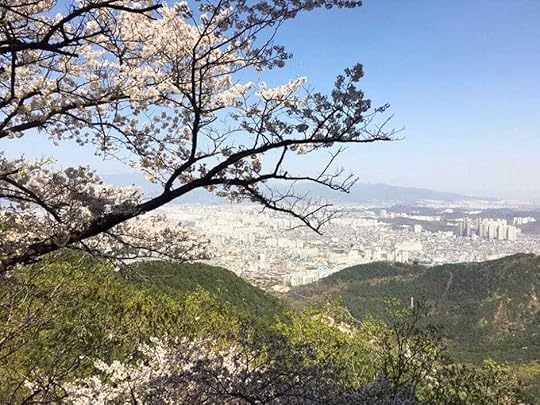 Daegu City seen from Apsan Mountain in springtime. Photo by Janice Horton
Daegu City seen from Apsan Mountain in springtime. Photo by Janice HortonTABLE OF CONTENTS
APSAN MOUNTAIN PARK, DAEGU, SOUTH KOREAAPSAN – AN EASY DAY TRIP FROM DAEGU CITYAPSAN – GATEWAY TO NATURAL BEAUTYBREATHTAKING VIEWS FROM THE SUMMITTEMPLES AND HISTORICAL SITESNAKDONG VICTORY MEMORIAL HALLAPSAN IS A YEAR-ROUND DESTINATIONAPSAN FOR REFLECTION AND CONNECTIONAPSAN – ONE OF DAEGU’S GREATEST TREASURESHOW TO GET THEREWHERE TO STAY NEAR TO APSAN MOUNTAIN PARK APSAN MOUNTAIN – AN EASY DAY TRIP FROM DAEGU CITYThe mountain itself, with its peak reaching an altitude of 600 meters, is part of a larger mountain range that forms a natural fortress around Daegu City.
Daegu is South Korea’s fourth largest city and has so much to offer with exciting city life and tranquil city escapes and it always amazes me how many tourists seem to miss adding Daegu as a destination in their Korean travel itinerary.
Daegu is less than two hours from Seoul if you take the Busan bound KTX Train (South Korea’s Bullet Train) and is a wonderful metropolitan yet also traditional Korean city – often considered the most conservative in South Korea – and is surrounded by beautiful mountains and forests and hiking trails.
Another of these mountains worth exploring just outside the city is Palgongsan with its mountainside Donghwasa Temple Retreat – do read my posts on these for more information.
If you haven’t heard of The City of Daegu and would like to know more about this fabulous destination do read my post My Top 10 Things To Do In Daegu and also see my Top Travel Tip For South Korea in this quick video clip below!

APSAN – GATEWAY TO NATURAL BEAUTY
Apsan Mountain is the crown jewel in the extensive range of mountains that form the backbone of South Korea and is renowned for its forested landscape, scenic views, and tranquil environment.
Whether you’re an experienced hiker or simply seeking a leisurely stroll, Apsan offers a variety of trails for all skill levels.
The main hiking trail to the summit is about 3 km long, winding through thick forests, picturesque streams, and steep inclines.
For those who prefer a gentler ascent – as I do – there is a cable car that takes you close to the peak and offers spectacular aerial views along the way.
To get to the Cable Car Station you just follow the paved road up hill through the lower levels of the park passing the picnic area and the memorial hall.

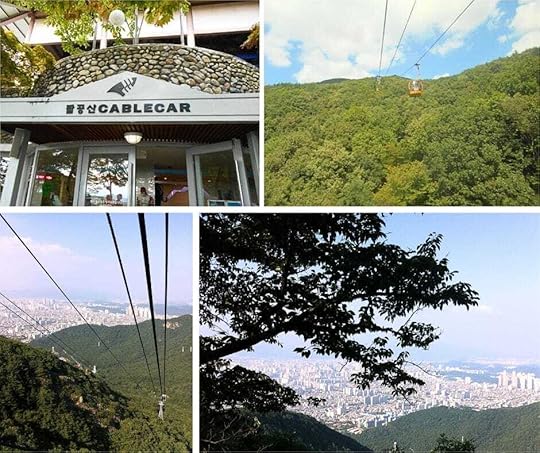 Apsan Mountain Cable Car and views over the city of Daegu
BREATHTAKING VIEWS FROM THE SUMMIT
Apsan Mountain Cable Car and views over the city of Daegu
BREATHTAKING VIEWS FROM THE SUMMIT
In my opinion, one of the most rewarding aspects of visiting Apsan Mountain is reaching the summit.
After a challenging hike or a smooth cable car ride, the summit unveils an absolutely stunning and unrivalled panoramic view of Daegu from a vast observatory platform.
On clear days, the view extends far beyond the city, allowing you to see the nearby mountains, the Nakdong River, and the sprawling urban landscape below.
Watching the sunsetting from Apsan is especially awe-inspiring.
I’ve explored Apsan Park a few times during my regular trips to South Korea – as my son and his family live in Daegu – and I will never tire of that incredible view!
 On clear days the view extends far beyond the city…
APSAN MOUNTAIN – TEMPLES AND HISTORICAL SITES
On clear days the view extends far beyond the city…
APSAN MOUNTAIN – TEMPLES AND HISTORICAL SITES
Apsan Mountain is more than just a natural wonder; it is also a spiritual retreat steeped in history and culture.
Throughout the park, you will find several small serene Buddhist temples that offer a glimpse into Korea’s spiritual heritage.
As you walk around, you’ll hear the soothing sounds of monks chanting, adding to the spiritual atmosphere.
Further up the mountain, visitors will find the larger and more famous Apsan Park Temple.
This temple, situated in a beautiful forest setting, has been a place of worship and pilgrimage for centuries.
With its intricate architecture and peaceful ambiance, it offers a place for visitors to rest, pray, and admire the beauty of Korean temple design.
If you enjoy temples then do also see my post on the beautiful nearby Donghwasa Temple.
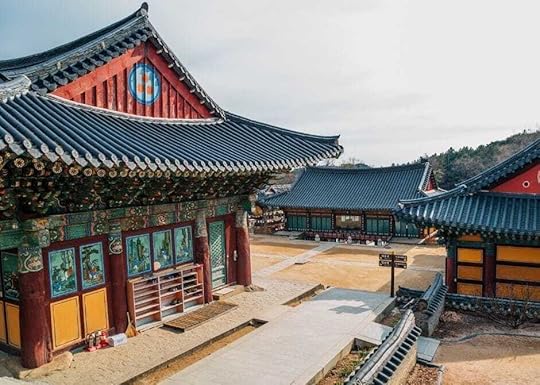 Buddhist temples offer a glimpse into Korea’s spiritual heritage
APSAN – NAKDONG VICTORY MEMORIAL HALL
Buddhist temples offer a glimpse into Korea’s spiritual heritage
APSAN – NAKDONG VICTORY MEMORIAL HALL
Another significant site worth spending time exploring is right at the entrance to Apsan Park and before you reach the Apsan Mountain Cable Car Station is the Apsan Nakdong Victory Memorial Hall.
This Memorial Hall has an outdoor exhibit of consists of several decommissioned tanks and fighter aircraft that were active in The Korean War (1950-1953).

Inside the hall there is an interesting and historically important Korean War Exhibition over several floors, that commemorates Korea’s struggle for independence from Japanese colonial rule in the early 20th century.
It also includes records of the Battle of River Nakdong, the last stronghold during the Korean War, for the South Korean and American forces.
There is also a Virtual Reality (VR) experience here to learn more vividly about the history and the patriotism of the conflict.
On the upper level is the Remembrance Hall where there are guns and artillery exhibits and the Unification Hall for the ‘heroic spirits’ of the Korean War.
The historical artifacts and stories told within these walls serve as a powerful reminder of Korea’s resilience and strength and I found it all very interesting, educational, and some of the photos and exhibits and writings (English translations are available) quite harrowing.
I can certainly appreciate why there is a need to promote national independence.
The Nakdong Victory Memorial Hall is open all year from 10 am to 5 pm.
It is free of charge and attracts hundreds of visitors a day.
APSAN IS A YEAR-ROUND DESTINATIONApsan Mountain Park is a year-round destination and I’ve been fortunate to experience Apsan in all four seasons.
In spring, cherry blossoms bloom along the trails, drawing crowds from all over Korea.
Summer brings vibrant green forests and colourful wildflowers and the refreshing shade of tall trees and cool shady paths make it a perfect retreat away from Daegu’s sometimes brutal summer heat.
Autumn is arguably the most beautiful season as the leaves change colour, with the entire mountain dressed in the brilliant hues of fall foliage and a canvas of fiery reds, oranges, and yellows, and making it a photographer’s dream.
Even winter has its appeal, as the snow-covered landscape turns the park into a peaceful, white wonderland.
For those who love outdoor activities, Apsan Mountain Park is a paradise.
The park is not just for hikers as it offers opportunities for cycling, horse riding, birdwatching, and has long been a favourite spot for paragliders.
Apsan Mountain Park offers both educational and fun experiences.
I love to visit with my family – we are of all ages – and it has been a lot of fun to explore the mountain park with my own sons and with my young grandson.
You can see the fun we had taking photos from the observatory platform!
 Two of my sons having fun on the observatory deck
APSAN FOR REFLECTION AND CONNECTION
Two of my sons having fun on the observatory deck
APSAN FOR REFLECTION AND CONNECTION
For many visitors, Apsan is not just a park – it’s a place to exercise, to have adventures, to get some fresh air, to recharge, reflect, and regain perspective.
The beauty of Apsan Mountain Park serves as a reminder of the beauty that exists just beyond the city’s limits and those incredible views from the top certainly offer perspective.
I love to walk along the trails, surrounded by nature, and that wonderful cool fresh air.
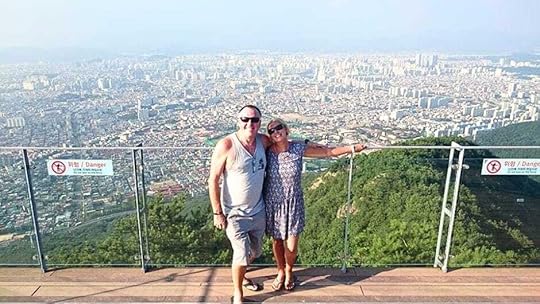 The backpacking husband and I at Apsan observatory deck
APSAN – ONE OF DAEGU’S GREATEST TREASURES
The backpacking husband and I at Apsan observatory deck
APSAN – ONE OF DAEGU’S GREATEST TREASURES
Whether you come to the mountain for the hike, the views, the museum or the temples, or simply for a quiet moment in nature, Apsan Mountain Park has so much to offer you and is such an easily accessible day trip from Daegu City.
Apsan Mountain Park is one of Daegu’s greatest treasures.
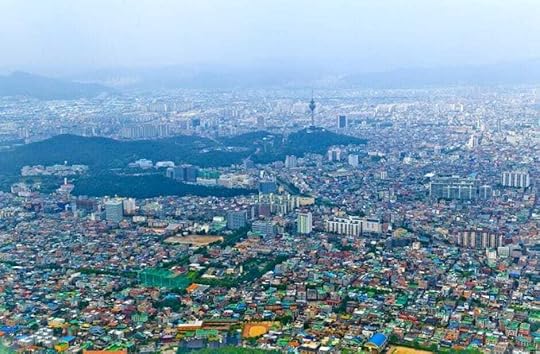 Views over Daegu City South Korea
APSAN – HOW TO GET THERE
Views over Daegu City South Korea
APSAN – HOW TO GET THERE
Address: 574-87 Apsansunhwan-ro, Nam-gu, Daegu
The park entrance is only 10km (6 miles) from Daegu City.
You can drive or take a taxi or take public transport to Apsan Mountain Park.
I took the (410 or 750) bus from Daegu to the Apsan Park stop.
You can take the subway from Daegu Station to Hyeongchungno Station in Daegu (Line1-Red) then take a taxi from Hyeongchungno Station to Apsan Park.
 WHERE TO STAY IN DAEGU NEAR TO APSAN MOUNTAIN PARK
WHERE TO STAY IN DAEGU NEAR TO APSAN MOUNTAIN PARKLUXURY STAY – THE DAEGU MARRIOTT HOTEL
MID-RANGE STAY – FEBRUARY HOTEL DAEGU
FIND YOUR IDEAL ACCOMODATION IN DAEGU USING THIS MAP
Are you planning to travel to South Korea?
Did you know about Daegu?
Have you ever explored Apsan Mountain Park?
Or do you plan to do so?
Let me know!
Ask a question or leave a comment in the box below.
THE BACKPACKING HOUSEWIFE RECOMMENDS TRAVEL INSURANCE
GET A NO-OBLIGATION QUOTE TODAY FROM WORLD NOMADS

The post South Korea: Apsan Mountain appeared first on The Backpacking Housewife.
October 21, 2024
South Korea: Donghwasa Temple
Donghwasa Temple, with its stunning architecture and towering Tongil Yaksa Buddha statue, is one of Korea’s most significant Buddhist temples.
Nestled on the slopes of Palgongsan Mountain in Daegu, South Korea, the fortified Donghwasa Temple is a historic and centuries-old sanctuary with a rich history.
Donghwasa Temple isn’t just a place of worship – with its ancient traditions and modern symbolism – it’s a living museum of Korean Buddhist culture and behind its fortified façade it feels like a hidden gem.
So, I was excited to explore this temple not just for a spiritual experience, but also to be amazed by the largest stone Buddha statue in the world, to enjoy the gardens, and to take in the panoramic views that are said to change with each season.

The name Donghwasa means ‘Temple of Paulownia Blossoms’ in honour of the legend of flowering trees that were seen to bloom in the temple grounds in wintertime.
I visited in March and I was lucky to see the early cherry blossom buds and other early springtime flowers adding a touch of delicate beauty to the temple and the gardens and the ancient stone structures.
While you might not have heard of Donghwasa Temple before, I feel sure this remarkable sanctuary is about to become your next must-visit destination.
Travel with me to South Korea and the beautiful Donghwasa Temple!
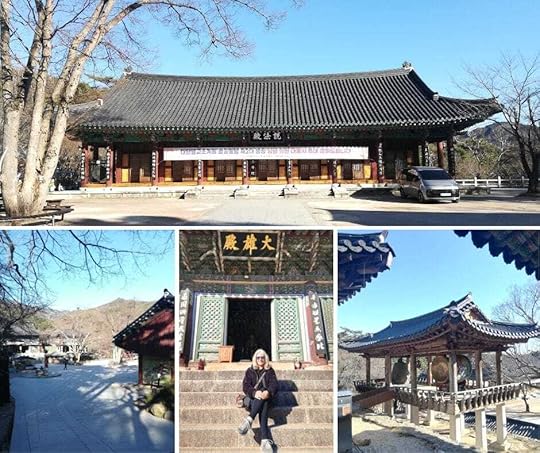 Travel with me to beautiful Donghwasa Temple!
Travel with me to beautiful Donghwasa Temple!TABLE OF CONTENTS
DONGHWASA TEMPLEDONGHWASA RETREAT AND STAY PROGRAMA JOURNEY THROUGH TIME AND TRADITIONTONGIL YAKSA BUDDHA STATUEARCHITECTURAL ASSETS AND SACRED SPACESA HIDDEN GEM OF KOREAN BUDDHIST HERITAGEBEST TIMES TO VISIT DONGHAWASA DONGHWASA RETREAT AND STAY PROGRAMYou might also be interested in knowing that Donghwasa Temple is one of the temples in South Korea that offers a Temple Stay and this means you can, should you wish, live like a monk for a while at Donghwasa Temple.
With a temple stay you can ‘relax and heal’ and immerse yourself in Buddhist culture and to learn about Zen meditation, the importance of tea ceremonies, making lotus lanterns, the practice of bowing, and appreciating ‘monastic’ vegetarian meals.
And, if you time your visit right (normally, October) you might also witness the unique Seungsi Festival, celebrating ancient Buddhist traditions.
I wandered around the temple retreat accommodation area in a contemplative mood and considered how wonderful and peaceful it might be to spend time at Donghwasa living like a monk to ‘take a break away from every day life for a while’.
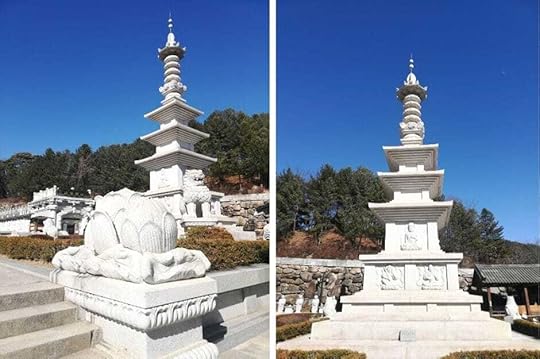 Should you wish you can live like a monk at Donghwasa Temple
A JOURNEY THROUGH TIME AND TRADITION
Should you wish you can live like a monk at Donghwasa Temple
A JOURNEY THROUGH TIME AND TRADITION
I mentioned a rich history. Donghwasa Temple, also known as Gonghwasa Temple, dates back to 493 AD when it was first founded by the monk Geukdal and named Yugasa Temple.
But, to evolve into the fortified beacon of spirituality and culture that we see here today, this ancient site has certainly weathered history.
The temple here has been destroyed and rebuilt many times over the centuries.
Donghwasa Temple’s layout is now a fascinating journey through Korean Buddhist architecture and the complex features several notable structures.
Many of the buildings we see today at Donghwasa were reconstructed during the Joseon Dynasty, during the reign of King Yeongjo in the 1700s and some were newly built around 1992 and the dedication of the Tongil Yaksa Buddha stone statue.
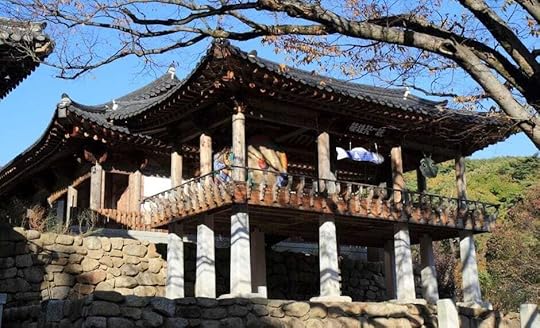 Many buildings at Donghwasa were reconstructed during the Joseon Dynasty
TONGIL YAKSA BUDDHA STATUE
Many buildings at Donghwasa were reconstructed during the Joseon Dynasty
TONGIL YAKSA BUDDHA STATUE
There is a fabulous curved fresco wall of carvings to marvel at – but for me – the shining star in this fascinating temple courtyard is the towering white stone statue of Tongil Yaksa Buddha.
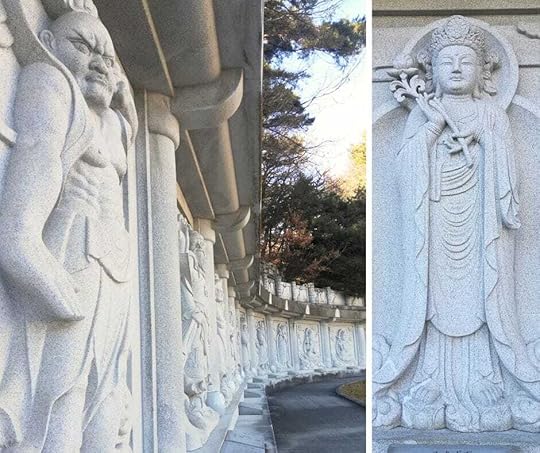 The fabulous curved fresco wall of carvings
The fabulous curved fresco wall of carvings 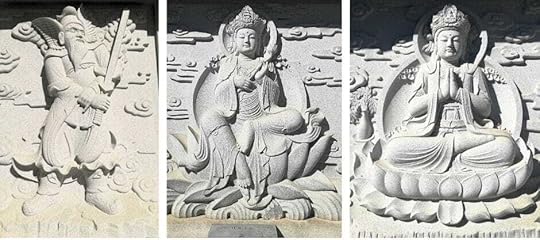
Standing an impressive 33 metres high inside the temple grounds it is the world’s largest stone Buddha statue and a symbol of the hope for peace and unity on the Korean peninsula.
I gazed up at the Tongil Yaksa Buddha’s serene face in wonder, while listening to a monk in a saffron colour wrap, who was chanting to the beat of his drum and truly felt my heart swell with peace and happiness.
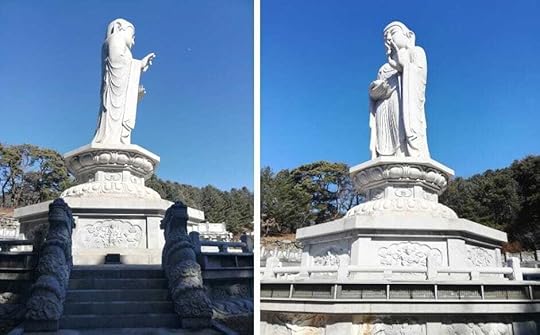 The towering white stone statue of Tongil Yaksa Buddha
ARCHITECTURAL ASSETS AND SACRED SPACES
The towering white stone statue of Tongil Yaksa Buddha
ARCHITECTURAL ASSETS AND SACRED SPACES
Cheonwangmun Gate: To set the tone for your spiritual journey at Donghwasa the imposing and fortified entrance tunnel to the temple is guarded by the Four Heavenly Kings who are stamping on demons. Here you will also find the ticket office.
 The road and entrance tunnel to The Cheonwangmun Gate
The road and entrance tunnel to The Cheonwangmun Gate The tunnel to the temple is guarded by the Four Heavenly Kings
The tunnel to the temple is guarded by the Four Heavenly Kings Main Buddha Hall: Housing exquisite Buddha statues and intricate murals, this is the heart of the temple’s religious activities.
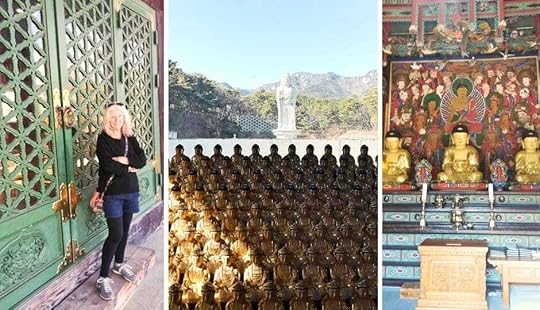 Buddha Hall is the heart of the temple’s religious activities
Buddha Hall is the heart of the temple’s religious activitiesThe Bongseo-lu: is the first building you can see in Donghwasa Temple and this word means ‘Pavilion of the Phoenix’ and echoes Donghwasa Temple’s name of winter phoenix flowering tree.
Stone Pagodas: These ancient structures stand as silent witnesses to centuries of devotion and craftsmanship.
Hermitage Halls: Scattered around the main complex are quiet retreats that offer spaces for deep meditation and reflection.
Beobhwabogung: Underground and beneath Tongil Yaksa Buddha is Beobhwabogung, a Shrine for Buddha’s Sarira and also the Seon Meditation Centre, the Lotus Sutra carved on stones and the restored First Tripitaka, where visitors can experience various Buddhist cultural programmes.
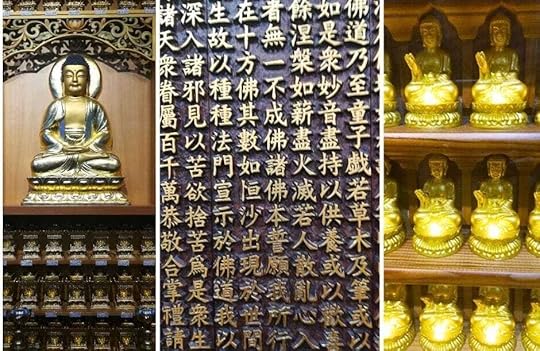 The centre preserves and holds 1200 Buddhist cultural assets
The centre preserves and holds 1200 Buddhist cultural assets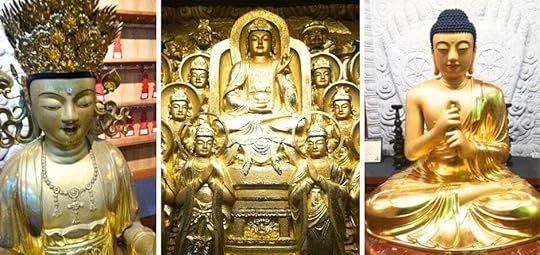
Seonbo Museum: This is in the building of Tongil- Daejeon which is located in front of the Tongil Yaksa Buddha Statue. It is a Buddhist related museum which preserves and holds 1200 Buddhist cultural assets and a repository of Buddhist portraits of great Buddhist monks, such as Samyeongdang, thirteen Buddhist treasures and thirty nationally designated cultural assets.
 A living museum of Korean Buddhist culture
A living museum of Korean Buddhist cultureThe Gardens: The extensive gardens at Donghwasa include streams and ponds, cascading falls, a stone bridge, fountains, stone pagodas, stone lanterns and statues.
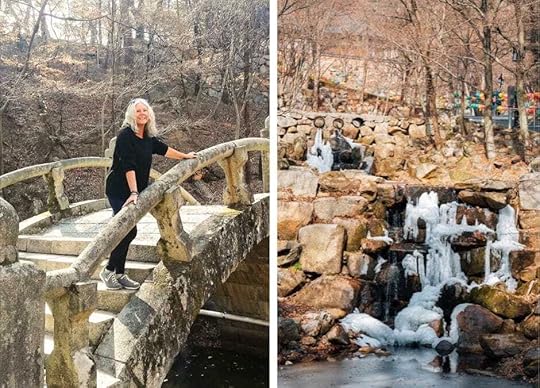 The extensive gardens at Donghwasa are a haven of peace
The extensive gardens at Donghwasa are a haven of peace Donghwasa Temple is one of Korea’s most significant Buddhist temples
A HIDDEN GEM OF KOREAN BUDDHIST HERITAGE
Donghwasa Temple is one of Korea’s most significant Buddhist temples
A HIDDEN GEM OF KOREAN BUDDHIST HERITAGE
Donghwasa Temple is an easy must-do day trip from the City of Daegu.
Located just 22km northeast from downtown Daegu city centre, it’s easy to get there by car or by public transport.
If you are short of vacation time a visit to Donghwasa Temple can be combined with a cable car trip up to the lofty observation deck on Palgongsan Mountain.
I did the Palgongsan Mountain trip separately from visiting Donghwasa Temple to allow for lots of walking and exploring, interesting sites, incredible views, and fascinating experiences.
I particularly love temples and if you enjoy ‘temple bagging’ as much as I do, then you might also want to read my posts on visiting Angkor Wat in Cambodia and my Top Temple Itinerary for Chiang Mai, Thailand.
BEST TIMES TO VISIT DONGHAWASAWhile Donghwasa Temple is beautiful year-round, I particularly appreciated my visit in early spring. I’m told autumn is particularly magical when the forest foliage bursts into a spectacular display of reds, oranges, and golds, creating a breath-taking backdrop.
Visiting Donghwasa Temple is more than just a tourist excursion – it’s a journey of discovery – and here, amidst the whispers of ancient trees and the gentle chime of temple bells, you’ll find a space to reflect, rejuvenate, and reconnect with both nature and your inner self.
Whether you’re drawn by the rich history, the stunning architecture, or the promise of spiritual enlightenment, Donghwasa Temple offers a unique and enriching experience. It’s a place where the past and present mingle, where tradition and modernity find harmony.
Address : Dong-gu DaeguDonghwasa-1-gil . Open all year between 8am -5pm.
So pack your curiosity and open your heart, because in South Korea, the Donghwasa Temple awaits and is ready to share its serenity with you!

Are you planning to travel to South Korea?
Did you know about The City of Daegu?
Do you enjoy exploring temples and other cultural sites?
Let me know and leave a comment in the box below!


THE BACKPACKING HOUSEWIFE RECOMMENDS TRAVEL INSURANCE
GET A NO OBLIGATION QUOTE FROM WORLD NOMADS TODAY!

The post South Korea: Donghwasa Temple appeared first on The Backpacking Housewife.
October 20, 2024
South Korea: Palgongsan Mountain
Palgongsan Mountain and Provincial Park is a fabulous and easy day trip from the City of Daegu in South Korea.
Daegu is South Korea’s fourth largest city and has so much to offer in the the way of city life and city escapes that it always amazes me how many tourists seem to miss adding Daegu as a destination in their Korean travel itinerary.
Daegu is less than two hours from Seoul if you take the Busan bound KTX Train (South Korea’s Bullet Train) and is a wonderful metropolitan yet also traditional Korean city – often considered the most conservative in South Korea – and is surrounded by beautiful mountains and forests and hiking trails.
If you haven’t heard of Daegu and would like to know more about this fabulous destination do read my post My Top 10 Things To Do In Daegu and see my Top Travel Tip For South Korea in this quick video clip below!

SOUTH KOREA – PALGONGSAN MOUNTAINPALGONGSAN VIEWS, HIKING TRAILS, TEMPLES & SHRINESPALGONGSAN CABLE CARFESTIVALS ON THE MOUNTAINGETTING TO PALGONGSAN MOUNTAIN FROM DAEGU PALGONGSAN VIEWS, HIKING TRAILS, TEMPLES & SHRINES
Because Daegu is situated in a land basin it tends to trap heat in the summer but often benefits from milder winters.
In summer, this means Daegu often has some of the highest temperatures in Korea.
A trip to the mountains is a perfect way for visitors and locals to get some cleaner fresher and cooler air.
This makes Palgongsan Mountain, in the Korean Taebaek Mountain Range, a popular destination for those who appreciate scenic hiking trails and more.
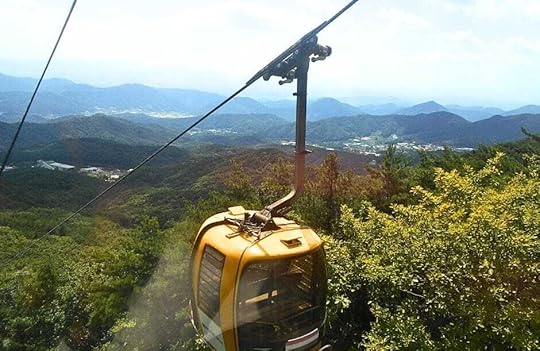 Palgongsan offers scenic hiking trails and incredible views
Palgongsan offers scenic hiking trails and incredible viewsThere are also several important temples, statues, shrines, and pagodas, on and around the mountain with Donghwasa Temple being the most famous.
There are many legends associated with Palgongsan, especially around the Gatbawi Buddha, which is believed to grant wishes and have mystical powers.
The word Palgong means Eight Peaks and stands at 1,192 meters or 3,911 feet above sea level.

PALGONGSAN CABLE CAR
For those not inclined to hike there is a cable car that will whisk you from the lower levels of the Provincial Park and take you gliding over the rising forest canopy.
At the top of the mountain there is a viewing platform and observation deck and a café and from the top station you can access additional hiking trails or walk to nearby scenic spots including rocky outcrops and forest paths.
 A cable car will whisk you from the lower levels
A cable car will whisk you from the lower levels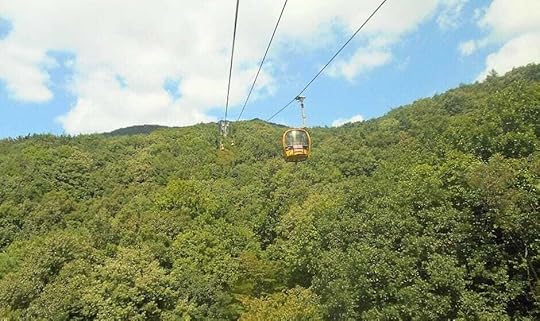 A fun and fabulous way to see the stunning views of the area
A fun and fabulous way to see the stunning views of the areaThe cable car operates year-round and taking the cable car gondola is a fun and fabulous way to see the stunning views of the surrounding areas including the city of Daegu in the distance while helping you access the higher points of the mountain without a strenuous climb.
It takes around ten minutes for the cable car to reach near the summit.
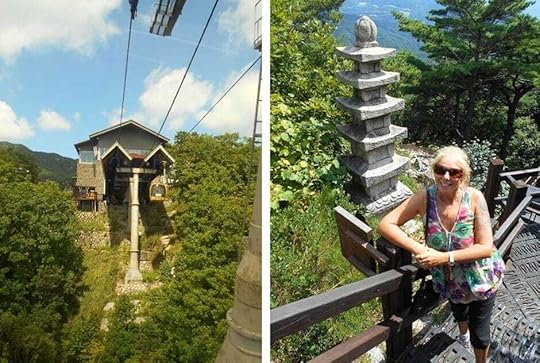 The cable car will help you access the mountain without a climb
The cable car will help you access the mountain without a climbMany visitors like to take the cable car up the mountain and then hike back down.
In the autumn (October to November) it’s an especially beautiful time to visit Palgongsan Mountain when the mountain’s slopes are covered in vibrant red, orange, and yellow foliage.
In March and April, the cherry blossoms in the park and fresh greenery on the mountain make springtime another beautiful time to visit.
I’ve visited Palgongsan in the summer and in the Autumn/Fall when it was reasonably quiet but I’m told in busy seasons and especially at weekends there is often a line of people waiting for the cable car.
It’s one of my favourite places to visit in South Korea and I hope you enjoy my photos and video clips!
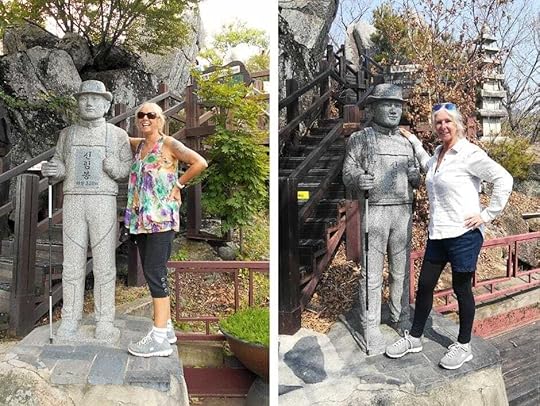 I’ve visited both in the summer and in the Autumn/Fall
I’ve visited both in the summer and in the Autumn/Fall 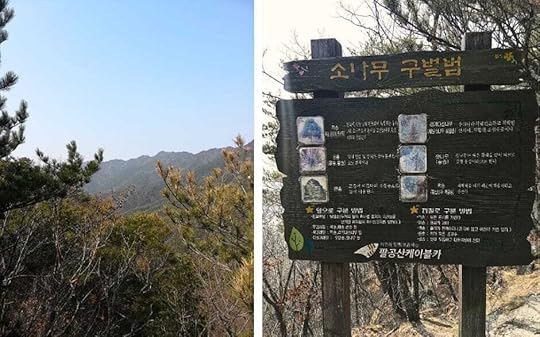 From the top station you can access additional hiking trails
From the top station you can access additional hiking trails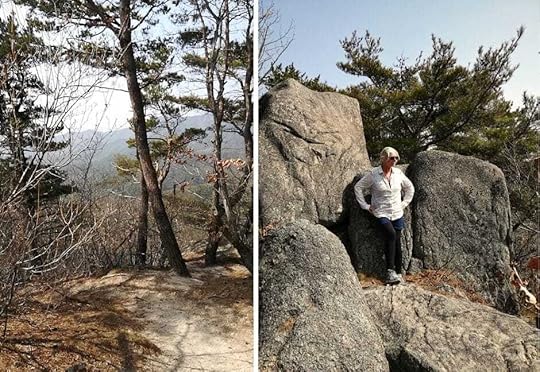 From the top station you can walk to rocky outcrops and forest paths
FESTIVALS ON THE MOUNTAIN
From the top station you can walk to rocky outcrops and forest paths
FESTIVALS ON THE MOUNTAIN
The Palgongsan Maple Festival is held annually in autumn to celebrate the vibrant fall foliage and visitors enjoy performances, exhibitions, and local food.
Similarly, during significant Buddhist holidays like Buddha’s Birthday (usually in May) the temples on Palgongsan and surrounding areas are decorated with lanterns, and visitors come to offer prayers and to participate in ceremonies.
 Fresh greenery on the mountain make springtime another beautiful time to visit
Fresh greenery on the mountain make springtime another beautiful time to visitOperating Hours: The cable car generally operates from the morning until late afternoon, though exact hours may vary depending on the season and weather conditions. It’s best to check ahead before visiting.
Ticket Prices: There is an admission fee for the cable car with both round-trip and one-way options available. Discounts available for children, seniors, and groups.
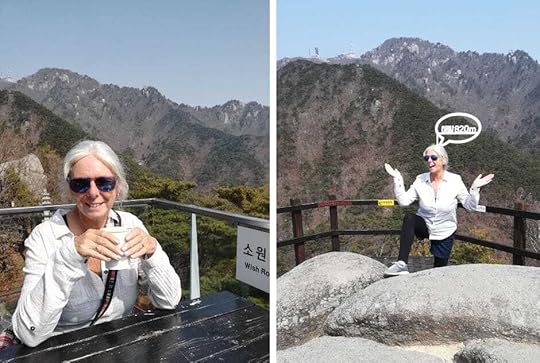 At the top there is a viewing platform, observation deck, and café
At the top there is a viewing platform, observation deck, and café 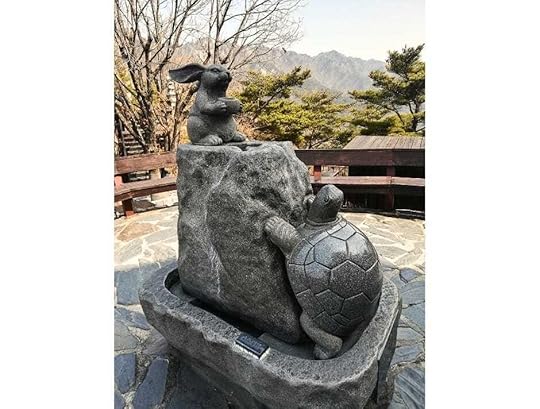 On the observation deck there is a rabbit and tortoise sculpture in stone
On the observation deck there is a rabbit and tortoise sculpture in stone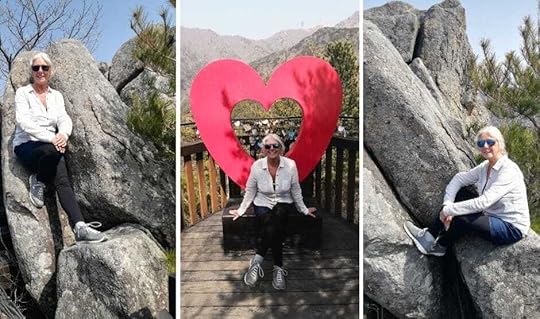 Klook.com (function (d, sc, u) { var s = d.createElement(sc), p = d.getElementsByTagName(sc)[0]; s.type = "text/javascript"; s.async = true; s.src = u; p.parentNode.insertBefore(s, p); })( document, "script", "https://affiliate.klook.com/widget/fe..." );
Klook.com (function (d, sc, u) { var s = d.createElement(sc), p = d.getElementsByTagName(sc)[0]; s.type = "text/javascript"; s.async = true; s.src = u; p.parentNode.insertBefore(s, p); })( document, "script", "https://affiliate.klook.com/widget/fe..." );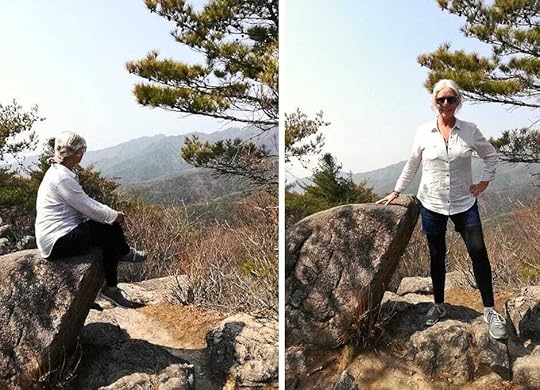 Palgongsan Mountain stands at 1,192 m or 3,911 ft above sea level
GETTING TO PALGONGSAN MOUNTAIN FROM DAEGU
Palgongsan Mountain stands at 1,192 m or 3,911 ft above sea level
GETTING TO PALGONGSAN MOUNTAIN FROM DAEGU
Location: The Palgongsan Cable Car’s base station is located near Donghwasa Temple, which I highly recommend to you as a combined or a separate visit.
Car: For those driving, there are parking facilities available near the base station.
Bus: To reach Palgongsan Mountain from Daegu city you can take one of the many frequent and inexpensive city buses to the provincial park. Take the red bus #1 to the end of the line and then walk up the hill.
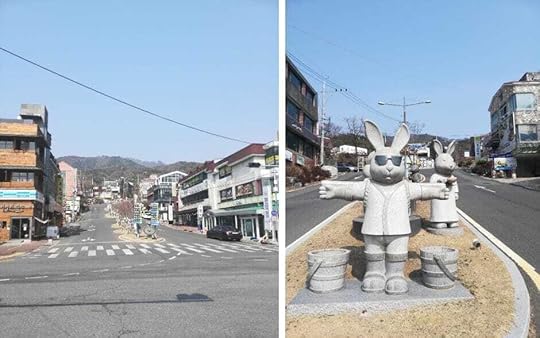 Walk up the hill to Palgongsan Provincial Park
Walk up the hill to Palgongsan Provincial ParkIf you enjoyed this post and you are a fan of cable cars you’ll also want to see my post on Apsan Mountain from Daegu.
Are you planning to travel to South Korea?
Did you know about Daegu?
Have you ever explored Palgongsan Mountain?
Or do you plan to do so?
Let me know and leave a comment in the box below!
THE BACKPACKING HOUSEWIFE RECOMMENDS TRAVEL INSURANCE
GET A NO-OBLIGATION QUOTE TODAY FROM WORLD NOMADS


The post South Korea: Palgongsan Mountain appeared first on The Backpacking Housewife.
October 8, 2024
Over 50’s Guide to Slow Travel
Twenty something years ago – as a spouse, a housewife, a mother to three young boys, and someone holding down two part time jobs to fit in with school hours – I couldn’t have found the time to slow travel.
In fact, if you’d asked me what slow travel was about, I wouldn’t have had a clue.
Back then, at best, I’d be hoping for a quick holiday somewhere sunny for a week or two.
Knowing that I’d probably spend it with one eye gazing longingly on a pool side sun lounger while the other was shrewdly deciding if the kids needed another application of sunblock.
But then – life accelerated – and our beautiful little boys had suddenly become handsome independently minded young men. And, when they flew the proverbial nest, we decided to fly the nest too.
In our mid-50’s, my husband and I retired from our ‘normal life’ to facilitate an opportunity to travel extensively.
Not being particularly wealthy or having much in the way of savings – see my post on how we afford to travel the world – we decided to sell our house, our cars, and all our worldly possessions to afford our adventures around the world.
Not that I’m saying YOU might do the same – as you could have other ways to facilitate travel – in retirement or a travel sabbatical or a midlife gap year.
But this, my dear fellow wanderlusters, is how we discovered The Joy of Slow Travel and we’ve been doing it now for the past ten years of travel!
“Over the past ten fabulous nomadic years, we’ve taken planes, trains, boats, buses and tuk-tuks, to make our way slowly across more than sixty countries and continents and seas and oceans to end up wherever we happened to find ourselves next.
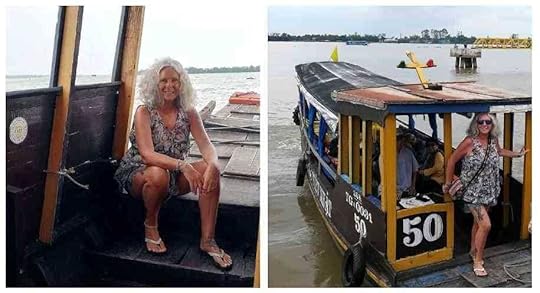 Travelling slowly on the Mekong River Vietnam
Travelling slowly on the Mekong River Vietnam
TABLE OF CONTENTS
2025 – THE YEAR OF SLOW TRAVELLIFE IN THE FAST LANETHE JOY OF SLOW TRAVELFOCUSING ON THE JOURNEYMY TOP 10 DESTINATION IDEAS FOR SLOW TRAVELSLOW TRAVEL IS NOT…SLOW TRAVEL IS…MY TOP 10 TIPS ON HOW TO SLOW TRAVELTHE BENEFITS OF SLOW TRAVELTHE DOWNSIDE OF SLOW TRAVELSLOW TRAVEL IS NOT A NEW WAY TO TRAVELSPEED OF TRAVEL CHANGES THE WORLDFLYING AROUND THE WORLDACCELERATING INTO THE 20TH CENTURYTRAVEL NOW LIFE IN THE FAST LANEInterestingly, a new report on top travel trends caried out by a leading hotel chain, has declared that 2025 will be ‘The Year of Slow Travel’.
Which sounds wonderful – except – I’m not sure many people know what it means.
What is slow travel?
How does it relate to travel in 2025?
And how do we do it?
Thankfully, the hotel chain’s announcement does also offer a quick explanation.
As life accelerates, Slow Travel – immersing oneself into a destination for an extended time as a local to fully experience the culture – is gaining popularity.
I guess we do all live such fast-paced lives that time seems to be accelerating.
And, we do all want to slow down, especially if we are on holiday vacation.
But, the prospect of doing something slowly when we’re abroad in order to savour it – well, that can seem a little over indulgent.
We can all imagine what it might be like to wake up – not to the sound of an early workday alarm clock – but to the relaxing sound of the ocean or the vibrant hum of a foreign city.
But who has the time?
Who can realistically fully experience culture for an extended time?
Who in these crazy fast and demanding of times is able to travel slowly?
 Taking the train from Da Nang to Hue via the Hai Van Pass Vietnam
THE JOY OF SLOW TRAVEL
Taking the train from Da Nang to Hue via the Hai Van Pass Vietnam
THE JOY OF SLOW TRAVEL
For us, slow travel meant spending not weeks but months exploring both the popular and the more remote islands of the Caribbean before heading off into Central America.
We also explored British Columbia Canada and made our way by Greyhound bus across the USA to experience bucket list destinations and live our own American Dream.
(Ours is quite different to the actual American Dream I expect!)
We then flew to Asia on an intended four-month trip which somehow through spontaneity and opportunity evolved into us spending a couple of fabulous years travelling through Amazing Asia – Thailand, Cambodia, Vietnam, Singapore, Malaysia, Indonesia, Philippines, Japan, South Korea, Taiwan, and China.
And then, to settle down for a while (while I was writing my series of Backpacking Housewife novels published by HarperCollins) we discovered housesitting and living like locals in Europe and mostly deepest France.
Naturally, because slow travel is amazing, I want to share with you what slow travel is all about and how we did it.
So that when you’re ready to slow travel you’ll know exactly how to do it too!
 Find out more on My Books Page
FOCUSING ON THE JOURNEY
Find out more on My Books Page
FOCUSING ON THE JOURNEY
I’d say the concept of slow travel could be described as more of a journey than a holiday vacation.
Because, if you’ve only got a window of a few days or a week or two weeks to travel, then you will want to do things or not do things and perhaps focus on your needs as opposed to your wants.
You might need to relax and so a holiday for you might involve a beach destination, a hotel, a pool, and even a cocktail or too while reading a book and working on your tan.
Alternatively, if you don’t like beaches or lounging, then you might choose a cabin in the woods in which to catch up on sleep and to read and from which to take a hike.
If your penchant is to take cultural break, then you might prefer to spend your days sightseeing and having long lazy lunches in a local café to relax and unwind from your normal stresses.
Which type of holiday vacation would you choose?
And, if you had the time to slow travel for an extended time instead, where would you go first?
Just below, in the next part of this post, I’ll be listing My Top 10 Destination Ideas For Slow Travel.
I’d love to know where you’d choose so do please leave a comment in the box at the end of this post!

 Click on any Highlighted Link to find out more!
MY TOP 10 DESTINATION IDEAS FOR SLOW TRAVEL
Fukuoka Japan
– a fabulous city less known to tourists with culture, history, and great food.
Penang Malaysia
– George Town is a UNESCO Heritage Site and is also known as the food capital of Malaysia.Dordogne France – while away a few months in a chateaux enjoying wine and cheese and all SW France can offer.
Daegu South Korea
– a metropolitan city surrounded by mountains and parks with so much to offer the visitor.
Koh Lanta Thailand
– the less crowded island in Krabi Province with beautiful beaches and forests and waterfalls.
Utila Honduras
– a small island in the Caribbean Sea known for its coral reef and a laid back island lifestyle.Hoi An Vietnam – an ancient and pretty port city popular with tourists for its cobbled streets and easy going ambiance.Cat Ba Vietnam – the mostly unknown gateway to Halong Bay and a gem of a destination in its own right.Taipei Taiwan – a fabulous city on a semi-tropical island with lots to offer, plenty to see, and super friendly population.
Chiang Mai Thailand
– a relaxed and popular town with digital nomads but I went for the culture and the temples.
Click on any Highlighted Link to find out more!
MY TOP 10 DESTINATION IDEAS FOR SLOW TRAVEL
Fukuoka Japan
– a fabulous city less known to tourists with culture, history, and great food.
Penang Malaysia
– George Town is a UNESCO Heritage Site and is also known as the food capital of Malaysia.Dordogne France – while away a few months in a chateaux enjoying wine and cheese and all SW France can offer.
Daegu South Korea
– a metropolitan city surrounded by mountains and parks with so much to offer the visitor.
Koh Lanta Thailand
– the less crowded island in Krabi Province with beautiful beaches and forests and waterfalls.
Utila Honduras
– a small island in the Caribbean Sea known for its coral reef and a laid back island lifestyle.Hoi An Vietnam – an ancient and pretty port city popular with tourists for its cobbled streets and easy going ambiance.Cat Ba Vietnam – the mostly unknown gateway to Halong Bay and a gem of a destination in its own right.Taipei Taiwan – a fabulous city on a semi-tropical island with lots to offer, plenty to see, and super friendly population.
Chiang Mai Thailand
– a relaxed and popular town with digital nomads but I went for the culture and the temples.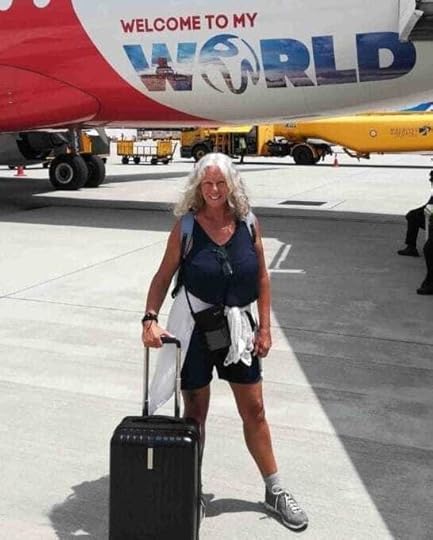 I feel slow travel is more about slowing down once I’ve arrived
SLOW TRAVEL IS NOT…
I feel slow travel is more about slowing down once I’ve arrived
SLOW TRAVEL IS NOT…
But first, it might be best to explain what slow travel is NOT.
Slow travel is not about rushing to tick off tourist attractions from a checklist.
It’s not about following a strict schedule where every hour of the day is planned out.
Slow travel is not always about staying in the most luxurious hotels as it promotes simpler, more eco-friendly choices, like staying in locally run accommodations and homestays.
It’s not about buying souvenirs, eating at chain restaurants, or engaging in activities that don’t align with the local culture or sustainability practices.
 Travelling by traditional longtail boat Thailand
Travelling by traditional longtail boat Thailand
Slow travel might be about enjoying the journey and that might mean travelling slowly to get to your destination but it’s not necessarily about how you get to where you’re going.
But, of course, you might want to choose to take the slow boat to China.
You might want to ride The Trans-Siberian Railway slowly through eight time zones.
You could drive a car or a RV or even walk a pilgrimage to your journey’s end if that’s your plan.
BUT personally, I feel it’s also perfectly okay to head to the airport and (eventually – once you actually get airborne) fly at 500 miles an hour to your chosen destination, if that’s how you want to (save time) and get there.
I’m guilty of the latter because my kind of slow travel is more about slowing down once I’ve arrived.
 Travelling from Chiang Mai to Bangkok by train
SLOW TRAVEL IS…
Travelling from Chiang Mai to Bangkok by train
SLOW TRAVEL IS…
Slow travel is a state of mind. It is about slowing down the pace and being intentional in your choices
It’s not about seeing everything but rather savouring each experience.
It encourages you to be present in the moment and mindful of their surroundings.
Slow travel means you become a “traveller” rather than a “tourist.”
It means you’ll get to see a place as a local and so you’ll see both the good and the bad.
Slow travel is about allowing for flexibility and spontaneous experiences as without a rigid schedule, you can adapt to the flow of your journey and take opportunities as they arise.
Instead of cramming multiple destinations into one trip, slow travellers will often stay in one location for an extended time – perhaps several weeks or months.
Allowing for a deeper appreciation of the environment and culture.
This might involve participating in local festivals, shopping at neighbourhood markets, dining at family-owned restaurants, and engaging in conversations with locals to gain insight into their way of life.
Staying with locals, participating in community-based tourism initiatives, or attending local events, encourage interaction and dialogue and perhaps learning a new language.
Slow travel is about contributing directly to the local economy by using local guides, choosing local businesses, artisans, and independent establishments rather than larger global corporations.
It’s also about having the time to learn about the history and traditions of a place, wandering through less-explored areas or visiting the same spots at different times of the day.
Slow travel is about reducing the environmental impact of travel.
It often involves making eco-conscious decisions, like opting for public transportation, cycling, or walking instead of flying or driving long distances.
It aligns with the idea of minimizing carbon footprints and supporting local ecosystems.
This might lead you to consider simplicity and minimalism.

Slow travel is about being conscious of your consumption from travelling with minimal luggage and packing light to choosing more sustainable accommodations and avoiding unnecessary luxury.
All this aligns with a broader effort to reduce resource use and travel sustainably.
Personally, I like to mix it up by using homestays and small hotels or motels and I’m happy to book a private room in a hostel but then I also like to occasionally stay in a plush hotel for a few days of luxury and pampering.
I use (affiliate links) Booking Dotcom or Klook Hotels to find and book my accomodation most of the time.
But for longer stays I’ll book short term and then enquire locally to find a suitable rental accomodation.
Slow travel is about forming meaningful connections with the people you meet along the way, whether they are locals, fellow travellers, or hosts.
Building relationships fosters a deeper sense of belonging and respect for the places visited.
By taking your time, you can reflect on your experiences, write a journal about your journey, learn more about yourself, and develop a deeper connection to the world around you.
You might even take part in retreats that focus on mindfulness, art, or wellness.
This often leads to more meaningful and transformative experiences than fast-paced travel.
 Taking the time to soak in the views – Cat Ba Island – The Gateway to Halong Bay Vietnam
MY TOP 10 TIPS ON HOW TO SLOW TRAVEL
Taking the time to soak in the views – Cat Ba Island – The Gateway to Halong Bay Vietnam
MY TOP 10 TIPS ON HOW TO SLOW TRAVEL
1. Fully Research Each Destination: Find out the entry requirements into your chosen country and find out how to apply for a longer stay visa if required. Make sure you are aware of any travel vaccines that might be required or advised. Enquire about any travel Learn something of the history, culture, customs, language, and lifestyle of the place you’re visiting.
2. Plan Fewer Destinations: Instead of rushing through multiple destinations, focus on spending more time in fewer places to allow you to experience the culture, people, and environment in a more meaningful way.
3. Stay in One Place for Longer: Instead of hopping between accommodations every couple of days, book longer stays (a week or more) in one location. Choose local rental accommodations like Airbnb, local guesthouses, or homestays that allow you to live like a local to foster a sense of home and allow for a deeper connection with the area.
4. Minimize Itineraries and Schedules: Don’t spend too much time planning a schedule and avoid overloading your itinerary with activities. This is so important as it leaves room for spontaneity. So many times, we have met people who tell us about a place or an opportunity, that we hadn’t previously known about. This flexibility allows you to explore places at your own pace and make discoveries along the way.
5. Embrace Unstructured Time: Take the time to slow down and relax. Engage with locals and make friends rather than moving from one tourist spot to another. Spend more time exploring areas at your leisure. Take in the small details, like local architecture, parks, or street art.
6. Choose Sustainable Transport: Whenever possible use public transport. This would include local buses, local subway, long distance trains, or bicycles. It’s eco-friendly, and it allows you to take in more of the local atmosphere. Aside from reaching your destination, try to avoid frequent air travel within the country as it’s less environmentally friendly.
7. Support Local Businesses: This is easy to do by choosing to eat at local restaurants, cafes, and markets to experience authentic food and support the local economy. Buy from artisans or small businesses rather than chain stores or global brands. Attend festivals, cultural events, and workshops led by locals.
8. Engage with the Local Community: You can do this by learning the language as even knowing a few basic phrases can open doors to more meaningful interactions with locals. Contribute to the community by volunteering at local projects (I volunteered for beach clean ups in the Caribbean and helped out at a turtle sanctuary in Malaysia) and also immerse yourself in cultural experiences by taking part in local traditions, customs, or even cooking classes.
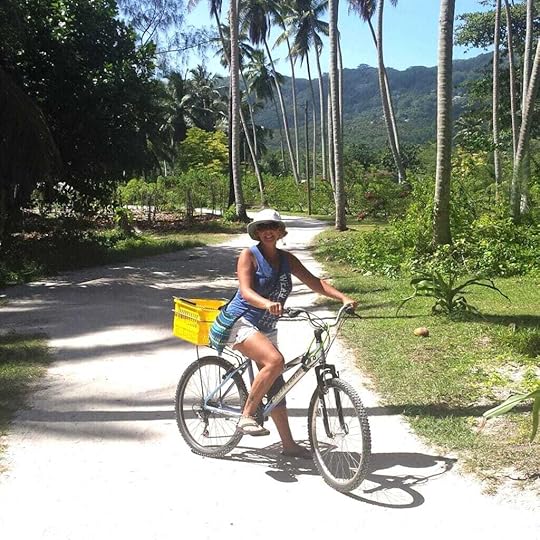 Cycling slowly around the island of Curieuse – Seychelles
Cycling slowly around the island of Curieuse – Seychelles
9. Travel in Off-Peak Seasons: This is a fabulous benefit to slow travel as travel during shoulder seasons (before or after the peak tourist period) allows you to experience destinations with fewer crowds. It’s also usually less expensive to travel and to find accommodation. Traveling off-season also reduces the strain on local infrastructure and ecosystems.
10. Embrace Minimal Packing and Travel Light. I’ll admit it’s not so easily done, especially when you first set out, and you think you’ll need everything bar the kitchen sink. But it’s something I’ve learned along the way and often the hard way.
Read my popular post on how to travel light.
I promise you that there’s a freedom to travelling with a smaller luggage load.
Plus, it’s also a lot cheaper to fly if you travel without checking luggage and this also lowers your carbon footprint by reducing emissions in air transport.
You also might like to read my post on whether to travel with a Backpack or a Suitcase as a midlife traveller.
 Travelling light – I travelled for six months in Asia with hand luggage only
THE BENEFITS OF SLOW TRAVEL
Travelling light – I travelled for six months in Asia with hand luggage only
THE BENEFITS OF SLOW TRAVEL
I believe the longer you can stay somewhere the better as then you’ll have an authentic experience of living somewhere like a local.
The most important aspect for me personally with long time slow travel is making new friends and getting to know the people who live in that place.
The differences in our cultures and perhaps our language and the absorbing of these things make slow travel fascinating to me.
Then the longer you stay or the more often you return to a place, strangers can become friends and you can find common opinions and shared interests.
And, in returning, to revisit my friends, receiving a wonderful ‘welcome home’.
I can honestly say I have many dear friends – people whom I have come to love – all over the world whom I have met while travelling and staying in one place for a while.
And, thanks to social media and apps like WhatsApp and Messenger, it is easy to stay in touch and connected to their lives afterwards when I have moved on.
The moving on leads me to the downsides – the drawbacks – of slow travel.
 Our wonderful friends in Utila Honduras – Central America
THE DOWNSIDE OF SLOW TRAVEL
Our wonderful friends in Utila Honduras – Central America
THE DOWNSIDE OF SLOW TRAVEL
Emotional Attachment: I’ve never found that being transient is a barrier to making friends and so when I move on from a place, where I’ve spent a considerable amount of time and energy, I miss that place and the experiences I’ve had there but mostly I miss the lovely people I’ve met.
I can’t help but to get attached and that for me is often painful.
I’m often tearful telling friends ‘farewell until we meet again’.
But I guess it’s a ‘price to pay’ for the freedom I get in return by living this lifestyle.
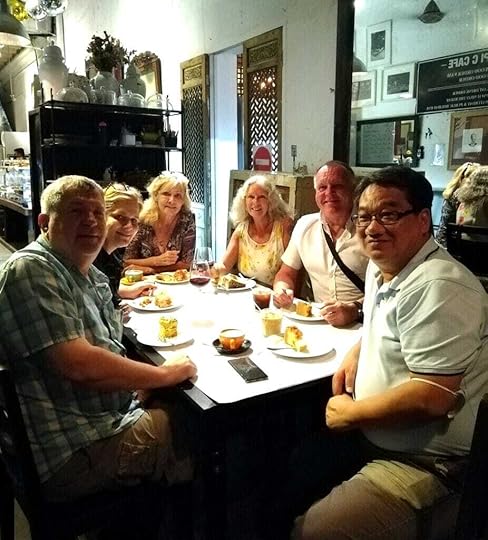 Our wonderful friends in Penang Malaysia
Our wonderful friends in Penang Malaysia
Travel Insurance: Long term travel often requires sourcing and affording more comprehensive travel insurance.
On internet travel forums, questions about travel insurance for older travellers and travel over 90 days is always a hot topic of conversation.
I wrote a post on Travel Insurance For The Over 50s that you might find helpful as it is based on my own experiences of needing travel insurance.
 Click to find out more about Travel Insurance for Over 50’s
Click to find out more about Travel Insurance for Over 50’s
Healthcare: Also, handling healthcare in foreign countries for extended periods can be challenging, particularly if you have pre-existing conditions and need a regular supply of certain medications.
Climate Issues: Seasonally, staying in one place for a longer time can mean experiencing changing seasons. In temperate climates, this is less of a challenge as this might mean transiting pleasantly from Summer through Fall and Winter.
But in tropical places, this might mean coping with extreme temperatures or dealing with rainy seasons or monsoon or even hurricanes and typhoon.
One of my favourite places in the world, the Caribbean island of Utila, where I often spend many wonderful months in the window between March and September is too uncomfortable for me once rainy season arrives due to the oppressive humidity and the number of sandflies and mosquitoes in rainy season.
I once had to change my plans to island hop the Philippines over Christmas time when a typhoon warning was issued so headed to Kuala Lumpur Malaysia instead.

Click on any Highlighted Text to find out more!
Another practical issue of long-term slow travel is the matter of a visa and legal stay limits and many countries have limitations on how long you can stay as a tourist.
Visas and Legal Length of Stay: Lots of countries, depending on your nationality and passport, have different requirements regarding entry and how long you are legally allowed to stay.
Many want you to apply for Visa Permissions (for a fee) before travelling.
For example: The US requires an Electronic System for Travel Authorization (ESTA) as part of its Visa Waver Programme and Europe is soon to bring in the European Travel Information and Authorisation System (ETIAS).
Depending on your origins and passport South Korea and Japan and Taiwan and lots of other countries now require you to complete an Online Tourist Visa App to acquire a QR Code to aid smooth entry into the country.
Some nations impose strict visa limits that may cut slow travel short, requiring travellers to leave after a certain period of time (e.g., 30, 60, or 90 days).
Long-stay visas or residency permits can be expensive and require significant paperwork which can add to the overall stress and cost of travel.
And, all these legal requirements are constantly shifting (I’m looking at you Thailand) so every trip you make as a tourist must be double checked to ensure you abide by the current entry and exit requirements to avoid any breach.
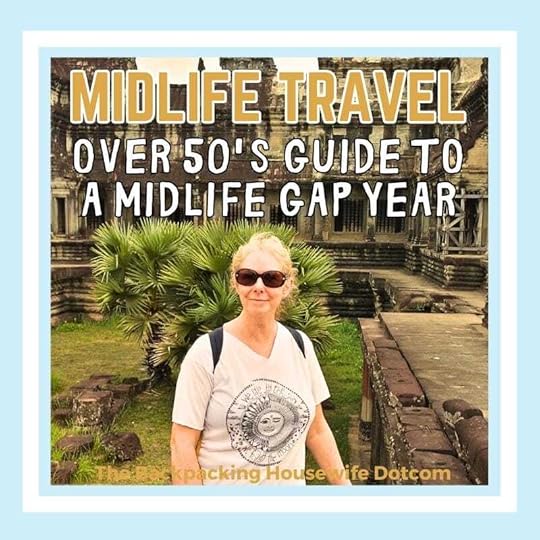 Read my Over 50’s Guide to a Midlife Gap Year!
SLOW TRAVEL IS NOT A NEW WAY TO TRAVEL
Read my Over 50’s Guide to a Midlife Gap Year!
SLOW TRAVEL IS NOT A NEW WAY TO TRAVEL
If you think about it – despite what the leading hotel report says about Slow Travel Trending in 2025 – in times long ago people always travelled slowly because it was the only way to travel.
Back in the 1700’s the time to travel anywhere was measured in days or weeks not hours.
For example, in 1700 in the UK, it took a week to travel the two hundred or so miles from London to York by horse and carriage.
By 1750, with an improved road, the journey still took around four days.
And it would still take ten whole days to get from London to Edinburgh.
In the USA, in the 1700s, the colonies were sparsely populated, and travel was slow, difficult, and often dangerous while on foot, on horseback, and using horse-drawn wagons and stagecoaches.
For example, on horseback, a trip from New York to Boston could typically take up to a week or more when today you can do it in just four hours by train.
SPEED OF TRAVEL CHANGES THE WORLDIn 1825, at Darlington in Northeast England, George Stephenson built the first public steam railway in the world. And, in 1830, both Liverpool and Manchester had railway connections.
Steam train travel for both passengers and freight would change the whole world.
By 1845, that weeklong stagecoach journey I told you about from London to York, was reduced to just 10 hours by taking the steam train.
In the USA, during the early 1800’s, steamboats made river travel faster and The Pony Express Mail Service connected the East and West.
Then in 1830, the steam locomotive revolutionizing cross-country travel.
The Transcontinental Railroad was completed in 1869 and linked the East and West coasts.
This cut travel time across the country from months to just days.
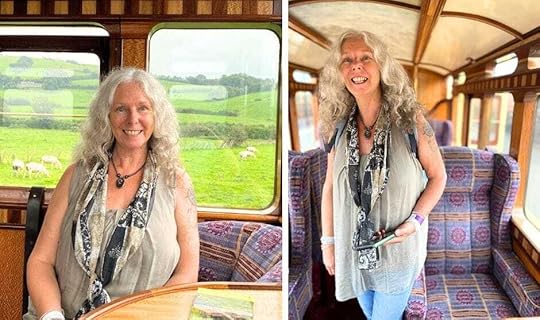 Travelling slowly by steam train through the beautiful Vale of Rheidol – Wales UK
FLYING AROUND THE WORLD
Travelling slowly by steam train through the beautiful Vale of Rheidol – Wales UK
FLYING AROUND THE WORLD
In 1914, the journey to Australia from the UK by ship took about 40 days, but in 1919, the first flight from Hounslow in England to Darwin Australia – via parts of Europe, the Middle East, India, and southeast Asia – took 28 days.
In the 1950s, the last liners could do the journey in about 25 days using the Suez Canal as a shortcut.
ACCELERATING INTO THE 20TH CENTURYBy the 1920s, the automobile was the dominant mode of transportation for individuals, and road infrastructure expanded significantly.
Intercity bus systems, like Greyhound, became popular for cheaper long-distance travel.
Jet aircraft was introduced in the 1950s to make flying faster, cheaper, and more accessible.
By the 1970s, air travel became the preferred transport for long-distance travel in the USA.
 No matter how you travel today – travelling is still an absolute privilege
TRAVEL NOW
No matter how you travel today – travelling is still an absolute privilege
TRAVEL NOW
In the 21st century, air travel remains the fastest and most common way to travel long distances.
But now we have more fuel-efficient planes and new technologies like TSA Pre-Check and biometric boarding.
Some countries have overcome political and logistical challenges to develop high speed rail.
There is growing interest in electric cars fuelled by companies like Tesla.
Ride-sharing services like Uber and Lyft and Grab have changed urban travel.
So, if the acceleration in the speed of travel has been speeding up our lives over the past few hundred years, maybe it is time to slow down our travel experiences
If only to fully savour and appreciate that even today – especially today – travelling is still an absolute privilege.
How do you like to travel?
Does Slow Travel appeal to you?
Would you take time out for the opportunity to travel for longer and travel slowly?
Is Slow Travel something you aspire to do in retirement?
Let me know. I’d love to hear from you.
Leave a comment!

I USE AND RECOMMEND KLOOK FOR BOOKING ACCOMODATION TICKETS AND ACTIVITIES
Klook.com (function (d, sc, u) { var s = d.createElement(sc), p = d.getElementsByTagName(sc)[0]; s.type = "text/javascript"; s.async = true; s.src = u; p.parentNode.insertBefore(s, p); })( document, "script", "https://affiliate.klook.com/widget/fe..." );I USE AND RECOMMEND BOOKING DOTCOM FOR TRAVEL ACCOMODATIONS

I USE AND RECOMMEND WORLD NOMADS TRAVEL INSURANCE – GET A QUOTE TODAY!

The post Over 50’s Guide to Slow Travel appeared first on The Backpacking Housewife.
September 15, 2024
UK: Vale of Rheidol Railway in Wales
The Vale of Rheidol Railway in the County of Ceredigion in Wales UK with its proud livery of lovingly restored heritage steam locomotives offers enthusiasts and visitors a chance to experience the golden age of steam train travel.
As part of The Great Little Trains of Wales, the Vale of Rheidol Railway is a historic narrow-gauge steam railway, typical of many small railways in Wales as the narrow-gauge allows for the sharp contours and steep gradients of the Welsh terrain.
Known for its scenic journey through the picturesque Rheidol Valley starting out from the west coast town of Aberystwyth, a restored steam engine locomotive (one of the oldest operational steam locomotives in the world!) will take you chugging and tooting into the Cumbrian Mountains, along a 12 mile (19 km) track to the small village of Devil’s Bridge.
Press Trip Notice: As a travel writer, I was delighted to be invited to accept complimentary first-class tickets for myself and a companion for The Vale of Rheidol Railway in exchange for writing this feature post and for sharing my honest review.

TABLE OF CONTENTS
VALE OF RHEIDOL RAILWAYI LOVE TO TRAVEL ON TRAINSTHE GOLDEN AGE OF STEAM TRAINSTHE NEW ENGINE SHED AND MUSEUMALL ABOARD THE VALE OF RHEIDOL STEAM TRAINMAKING SPECIAL MEMORIESWHAT ARE THE STATIONS AT THE VALE OF RHEIDOL?HOW LONG IS THE VALE OF RHEIDOL RAILWAY JOURNEY?DEVIL’S BRIDGETHE THREE BRIDGESTHE LEGEND OF DEVIL’S BRIDGETHE WATERFALLSINTERESTING FACTS ON THE VALE OF RHEIDOL RAILWAYTHE VALE OF RHEIDOL RAILWAY LOCOMOTIVESTEN REASONS TO VISIT THE VALE OF RHEIDOL RAILWAYFARES AND TICKETSGETTING THERE I LOVE TO TRAVEL ON TRAINSI have to tell you that I absolutely LOVE to travel on a train – and I have done so all over the world – from riding on the fastest bullet trains like the KTX in South Korea, the THSR in Taiwan, and the Shinkansen in Japan, to the much slower but equally memorable old train that I travelled in from Chiang Mai to Bangkok in Thailand.
Another vintage train trip that I’m still feeling nostalgic over was through the jungles of Malaysian Borneo, in a beautifully restored old colonial style carriage pulled by a 1896 steam locomotive, with The Heritage Railway in Northern Borneo.
So, as you can imagine, I was very excited indeed for the opportunity to travel on The Vale of Rheidol Railway from Aberystwyth to Devil’s Bridge.
Especially as it was as “The second most beautiful train journey in Europe” after The Orient Express!

THE GOLDEN AGE OF STEAM TRAINS
I arrived in Aberystwyth in good time to collect tickets from the impressive and authentically vintage looking ticket office and to browse the gift shop as well as to allow adequate time to explore the new Engine Shed and Railway Museum.
In the Engine Shed, with its fabulous wooden block flooring laid to replicate a common type of 19th century industrial flooring, you can find out about the history of The Vale of Rheidol Railway.
 At Vale of Rheidol Aberystwyth Station
At Vale of Rheidol Aberystwyth StationFrom photographs and information boards you can also learn about the legacy of this heritage railway and find out about steam train and railway enthusiasts Peter John Rampton and his partner Tony Hills who successfully bid on the railway back in 1987 when it came up for sale from British Rail.
And, of course, you can stand in awe to admire the many lovingly restored engines and carriages on display in the museum.
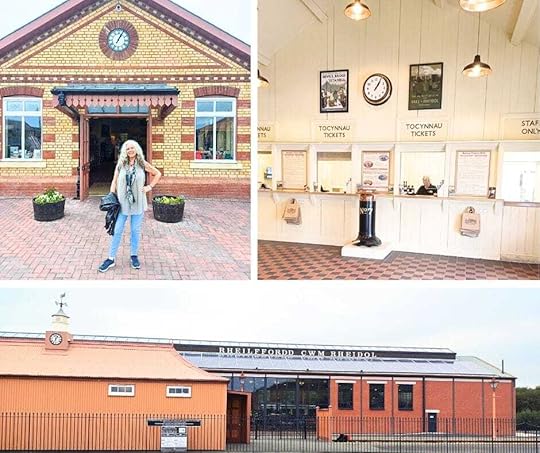 THE NEW ENGINE SHED AND MUSEUM
THE NEW ENGINE SHED AND MUSEUM
Opened in May 2024, the impressive new The Vale of Rheidol Railway Engine Shed and Museum is a 5000 sq/ft (approx. 465 sq/metre) area that has been converted from an original 1938 engine shed.
Check out the Vale of Rheidol Railway official website for more information on exhibits, including makes, models, and origins of the trains and rolling stock on display.

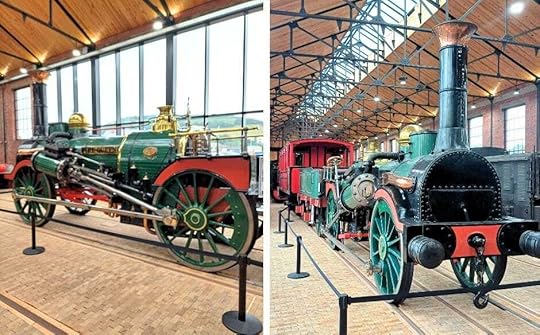 The Vale of Rheidol Railway Engine Shed and Museum
The Vale of Rheidol Railway Engine Shed and Museum  The Cambrian Coast Express
The Cambrian Coast Express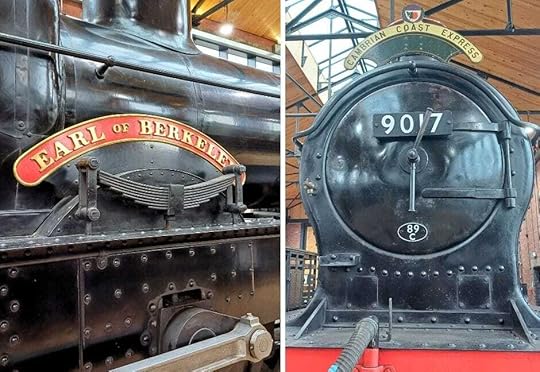 The Earl of Berkeley at The Vale of Rheidol Railway Museum
ALL ABOARD THE VALE OF RHEIDOL STEAM TRAIN
The Earl of Berkeley at The Vale of Rheidol Railway Museum
ALL ABOARD THE VALE OF RHEIDOL STEAM TRAIN
Then it was time for me to to climb aboard the train and into the first-class carriage.
On boarding, our ticket was inspected by our friendly guard, Rob (‘Batty’) who was aptly dressed in a traditional Great Western Railway uniform in the nostalgic style of yesteryear.
When I asked Rob for his photo he promptly obliged and even loaned me his hat!
Stepping into the restored carriage, I had the feeling of stepping back in time to an age when train travel was a luxurious experience for those lucky enough to travel in first-class.
From the carriage’s opulent polished wood finishes to the intricate mosaic tiles at the doorstep, to the plush upholstered furniture, to the exquisite hand painted frescos on the ceiling, and the large viewing window at the back of the carriage.
The first-class carriage is so comfortable that I immediately felt completely spoiled and in great anticipation of our journey.
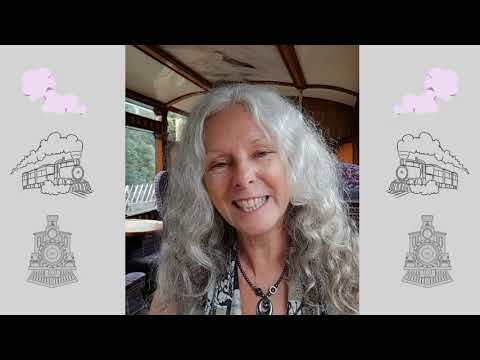
 All aboard The Vale of Rheidol steam train!
All aboard The Vale of Rheidol steam train! Like stepping back in time
Like stepping back in time 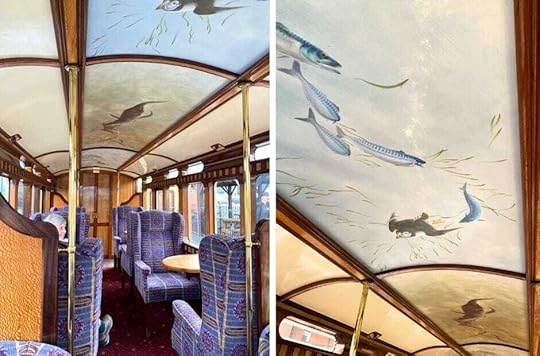 Exquisite hand painted frescos on the ceiling
Exquisite hand painted frescos on the ceiling The first-class carriage is so comfortable
The first-class carriage is so comfortable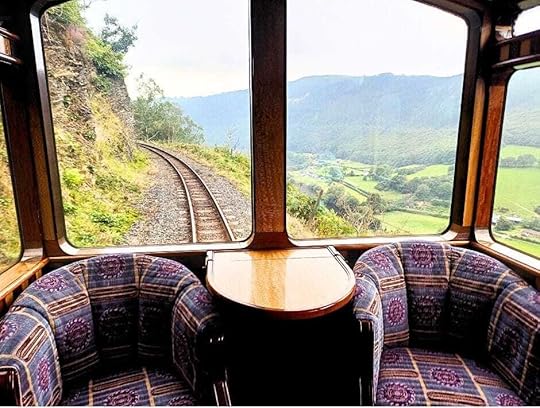 The large viewing window at the back of the carriage
MAKING SPECIAL MEMORIES
The large viewing window at the back of the carriage
MAKING SPECIAL MEMORIES
I spoke to several couples who were on holiday in Wales and a single gentleman who’d travelled from Liverpool who all told me their ride on The Vale of Rheidol Railway was about having a fabulous experience and making special memories and ticking off their travel bucket list while savouring retirement years.
This is a lifestyle choice I advocate for myself and for everyone in their midlife and later years and throughout this website.
On the day I travelled (a Saturday in September) the train was popular and busy and in the other carriages and in the open carriage, there were lots of happy smiling people and family groups, many with children, all enjoying the experience too.
As we set off down the narrow-gauge track, gathering speed, with the steam engine hooting and tooting and chugging out plumes of smoke, we waved to those who remained at the station and to those we passed along the way.
Then in an adjacent field, a team of cricketers all stopped play to wave back!
Everyone loves to wave at a steam train!
Then, in open countryside, sitting in my comfortable unholstered arm chair, I gazed out of the large picture window at the back of the train.
I found myself mesmerised as we travelled through a swirling smoky tunnel formed by lines of bowing trees in late summer foliage and the smoke from the steam engine hanging heavily in the air behind us like a dark fog.
A haunting and inspiring scene for our journey to The Devil’s Bridge!
Then, as we chugged along the side of the Rheidol Valley and up into the Cambrian Mountains, the views opened up to a sweeping vista of breath taking beauty with the Nant-y-Moch reservoir sparkling below us and Red Kites and Buzzards soaring high above us.
I was told that these magnificent bird of prey are often seen from this train.
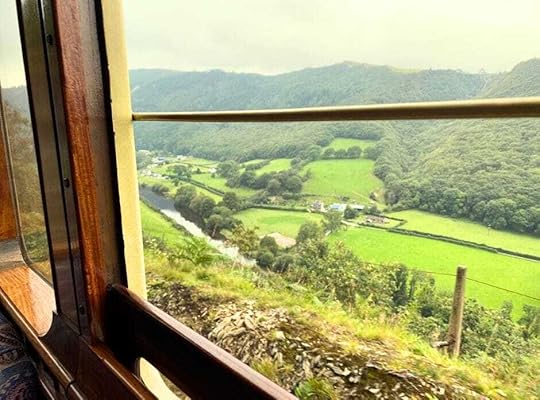 A sweeping vista of breath taking views!
A sweeping vista of breath taking views!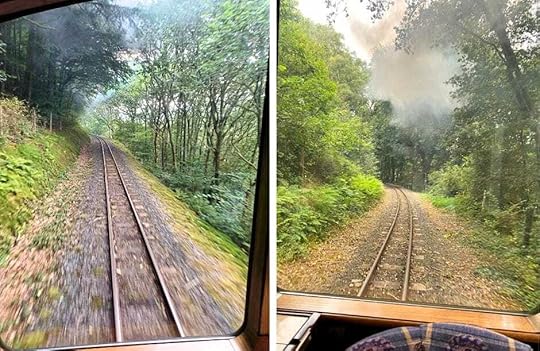 A swirling smoky tunnel formed by lines of bowing trees
WHAT ARE THE STATIONS AT THE VALE OF RHEIDOL?
A swirling smoky tunnel formed by lines of bowing trees
WHAT ARE THE STATIONS AT THE VALE OF RHEIDOL?
We stopped off at several tiny heritage train stations along the way to take on water and these stations are at Llanbadarn, Glanyrafon, Capel Bangor, Nantyronen, Aberffrwd, Rheidol Falls and Rhiwfron, before arriving at Devil’s Bridge.
 There are heritage train stations along the way
HOW LONG IS THE VALE OF RHEIDOL RAILWAY JOURNEY?
There are heritage train stations along the way
HOW LONG IS THE VALE OF RHEIDOL RAILWAY JOURNEY?
The train journey from Aberystwyth to Devil’s Bridge is approximately 12 miles long (approx 20 km) and takes about an hour each way.
During the scenic journey, the powerful narrow-gauge steam locomotive will climb an steadily elevating track through the Cambrian Mountains by 700ft (200m) from Aberystwyth to Devil’s Bridge.
Trains will normally wait for one hour at Devil’s Bridge station before returning to Aberystwyth.
But, if you are on an earlier train and you’d like to spend more time at any one of the recently restored intermediate stations at Llanbadarn, Glanyrafon, Capel Bangor, Nantyronen, Aberffrwd, Rheidol Falls and Rhiwfron, then you can certainly discuss this with your Guard prior to boarding.
Then you can explore the many walks the valley has to offer before either resuming your journey onto Devil’s Bridge or returning to Aberystwyth on a later train should the schedule allow.
 Aberystwyth to Devil’s Bridge is approximately 12 miles
DEVIL’S BRIDGE
Aberystwyth to Devil’s Bridge is approximately 12 miles
DEVIL’S BRIDGE
Devil’s Bridge village, known in Welsh as Pontarfynach, is a place in the heart of Wales and in the Cambrian Mountains, rich in history, legend, and natural beauty.
These days, the area is a tourist attraction and also a popular TV and movie location.
But has been a tourist attraction with visitors since the 18th century and was the subject of a poem by William Wordsworth who wrote the “Torrent at the Devil’s Bridge”.
The celebrated English author George Borrow wrote a humorous account of his stay at Devil’s Bridge in his works entitled “Wild Wales” in 1854.
THE THREE BRIDGESDevil’s Bridge is also very famous for its unique series of three bridges stacked on top of one another and spanning the River Mynach.
The name Mynach, meaning Monk’s River, dates back to the oldest bridge that was constructed by monks from the nearby Abbey in the 11th Century.
The second bridge was built directly above the first in the 1750s to improve the crossing when the original became worn and unsuitable for the mostly horse-drawn traffic of the day.
The modern cast-iron bridge that we see here at Devil’s Bridge today is the topmost bridge, built in 1901, to accommodate today’s motorised transportation needs.
THE LEGEND OF DEVIL’S BRIDGEAccording to local legend, the original bridge was so difficult to build that the Devil himself offered to construct it in exchange for the soul of the first living being to cross it.
But the monks outwitted the Devil and saved their own souls by sending a dog across the bridge first and the Devil is said to have never returned to Wales.
Interestingly, over the years the story has varied and some say it was an old woman and not the monks who made the pact with the devil and the first living being to cross was not a dog but a cow.
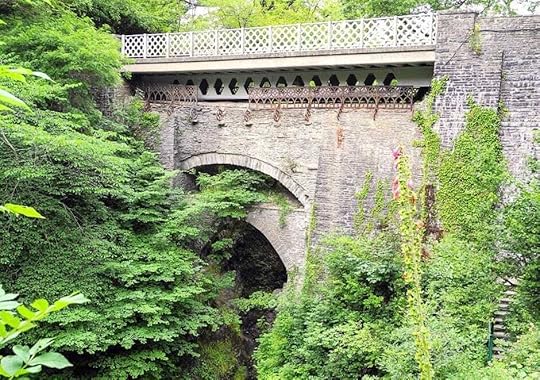 Devil’s Bridge is famous for its three bridges
THE WATERFALLS
Devil’s Bridge is famous for its three bridges
THE WATERFALLS
Devil’s Bridge is also famous for its dramatic waterfalls, known as the Mynach Falls, which plunges around 90 meters (300 feet) in a series of cascades down a steep, wooded gorge, creating a breath taking natural spectacle.
This makes these falls amongst the highest in Wales.
Visitors to Devil’s Bridge can hike the nature trail and the network of walking paths and steps.
One of the most popular being the “Punchbowl” walk with access to even more stunning views of the falls and the gorge.
Here you can descend Jacobs Ladder (100 steps) and go inside Robbers Cave, an old hideout place next to the waterfall.
But, you should be aware that the Devil’s Bridge nature trail and hike and steps can be challenging, especially in wet weather.
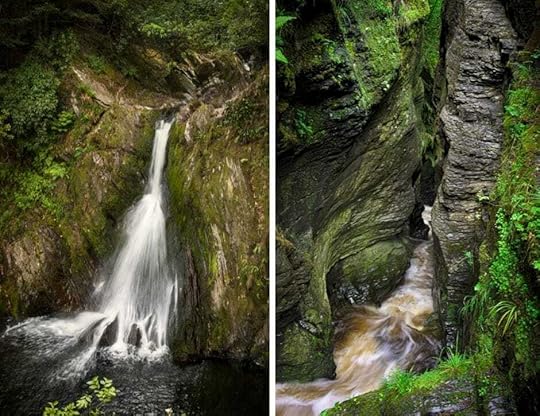 Devil’s Bridge is also famous for its dramatic waterfalls
Devil’s Bridge is also famous for its dramatic waterfallsI only had an hour to spend at Devil’s Bridge before taking the last train of the day back to Aberystwyth and so I stood on the bridges and looked down at the falls before enjoying a refreshing beverage at the Hafod Hotel, sitting at a table outside to make the most of the September weather being still dry and warm.
Then, a walk back up the hill to the Devil’s Bridge station, in anticipation of a wonderful and relaxing trip back in our luxurious first class carriage on The Vale of Rheidol steam train.

INTERESTING FACTS ON THE VALE OF RHEIDOL RAILWAY
The Rheidol Railway was first authorised by an Act of Parliament on 6th August 1897.
The Rheidol Railway line was opened in 1902 to carry lead and timber but soon became popular with tourists.
The railway was one of the last steam railways operated by British Rail until it was privatized in 1989.
The locomotives and carriages currently in use on The Vale of Rheidol Railway were built for the line by the Great Western Railway between 1923 and 1938.
BUT, at the time of my visit, one of the original locomotives commissioned for the Ffestiniog Railway in Porthmadog – The Palmerston – built in 1864 and one of the UK’s oldest working steam trains was running at The Vale of Rheidol in Aberystwyth.
The railway is now owned by a charitable trust, dedicated to the preservation of the railway at Aberystwyth, and as well as many old steam locomotives and vintage carriages that date back to the 1920’s and 1930’s.
There are many restoration projects currently ongoing in the workshops which will eventually be on display in the museum.
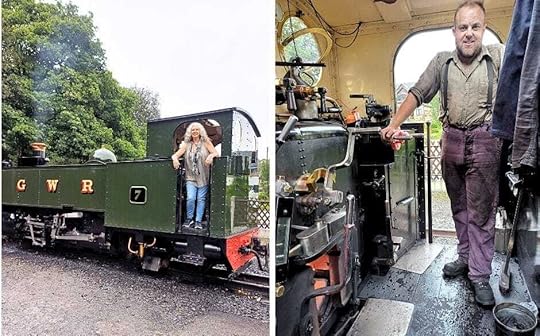 Owain Glyndwr (#7 – Built in 1923)
THE VALE OF RHEIDOL RAILWAY LOCOMOTIVES
Owain Glyndwr (#7 – Built in 1923)
THE VALE OF RHEIDOL RAILWAY LOCOMOTIVES
There is an impressive roster of restored engines in use on the railway to pull the carriages and transport visitors.
These working engines have names like Owain Glyndwr (#7 – Built in 1923), Llewelyn (#8 – Built in 1923), Prince of Wales (#9 – Built in 1924), and Drakensberg (#60 – Built in 1927).
The fleet of fully restored locomotives are painted either in their original livery or the distinctive blue livery of the Vale of Rheidol Railway.
 At The Vale of Rheidol Railway Museum
TEN REASONS TO VISIT THE VALE OF RHEIDOL RAILWAY
At The Vale of Rheidol Railway Museum
TEN REASONS TO VISIT THE VALE OF RHEIDOL RAILWAY
1. See 12 miles of stunning Welsh scenery on one of the most spectacular railway journeys in Europe!
2. Travel behind one of the restored vintage steam locomotives built in the 1920s.
3. Talk to the friendly and knowledgeable locomotive crews, guards, and station staff.
4. See the red kites. Once endangered, these birds of prey are now often seen from the train.
5. Visit the famous Devil’s Bridge Waterfalls and discover the legend of Devil’s Bridge.
6. Visit the award-winning Sarah Bunton’s Chocolate Shop at Devil’s Bridge.
7. Realise those childhood dreams and have a go at driving a steam locomotive at Devil’s Bridge station with the Driver Experience on selected days during the summer and for a small fee. Find out more about Driver Experience here.
8. Enjoy refreshments in the cafe at Devil’s Bridge or a meal and a drink at the Hafod Hotel, just steps away from The Devil’s Bridge.
9. Take a walk between the restored stations on one of the many paths and trails.
10. The Vale of Rheidol Railway is a not for profit charity. This means all fare revenue gets reinvested into the railway and so your visit helps to keep to keep the railway running for future generations to enjoy.
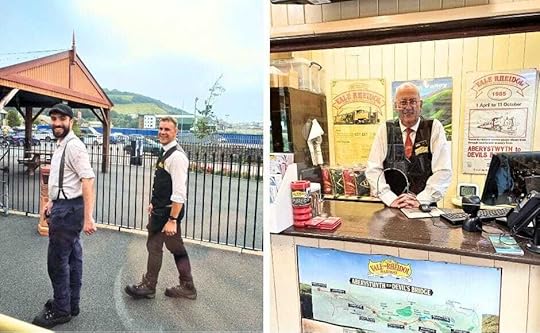 Welcoming and hard working staff at The Vale of Rheidol Railway
FARES AND TICKETS
Welcoming and hard working staff at The Vale of Rheidol Railway
FARES AND TICKETS
You can find information on the timetable and the current price of fares and dates of special events and for entry only price to the museum and engine shed display for none travellers on the official website.
Note: There are two fares – a basic fare – or a donation fare which includes an additional voluntary donation of 10%.
Train ticket fares includes free museum and engine shed entry.
Tickets can be purchased in advance on the website or bought from the Booking Offices on the day of travel.
Pre-booking is recommended to avoid disappointment.
Find out about accessibility here.
Children aged 2 years old and under travel free of charge.
Dogs can travel for a fee but restrictions apply in the first class carriage with the exception of assistance dogs.
Season tickets are available for both railway travel and the museum.
 At The Devil’s Bridge Railway Station
GETTING THERE
At The Devil’s Bridge Railway Station
GETTING THERE
The Vale of Rheidol Railway is at Park Avenue, Aberystwyth, Ceredigion, Wales.
By Car: the postcode for Google Maps and for Sat Nav is SY23 1PG
There is a dedicated car park located off Park Avenue / Boulevard St Brieuc.
By Train: Aberystwyth mainline railway station is a short distance from the Vale of Rheidol station with regular rail services to Shrewsbury and Birmingham (New Street or International.)
By Bus: Aberystwyth is served by regular bus services from across Wales.
The bus station is short walk (approx. 10 minutes) to the Vale of Rheidol Booking Office.
Public transport timetable information is available from Traveline Cymru.
Note: Devil’s Bridge is a rural location and is not served by public transport.
I do hope you’ve enjoyed joining me on this fabulous day trip to Aberystwyth, through the Cambrian Mountains into the heart of Wales and The Devil’s Bridge, on a wonderful and nostalgic vintage steam train run by the welcoming and hard working people at The Vale of Rheidol Railway.
I heartily recommend this trip to you!
Have you ever travelled by steam train?
Have you ever been to Wales UK?
Are you planning to do so?
Let me know – I’ll be delighted to hear from you!
THE BACKPACKING HOUSEWIFE RECOMMENDS TRAVEL INSURANCE
GET A NO-OBLIGATION QUOTE TODAY FROM WORLD NOMADS

The post UK: Vale of Rheidol Railway in Wales appeared first on The Backpacking Housewife.
August 31, 2024
Exploring Gamcheon Culture Village Busan South Korea
The quirky and artful looking Gamcheon Culture Village is at the southernmost tip of the South Korean peninsular and built on a steep mountainside overlooking the port city of Busan.
Gamcheon Culture Village has a landscape that gives it the nickname ‘Machu Picchu of Korea’ and is so colourful and enchanting that it’s hard to believe it was once a dark and dismal slum inhabited by poor refugees of the Korean War.
In 2009, the local government and residents initiated a project to revitalize the area through art.
The village underwent a transformation, with houses painted in vibrant colours and various artworks installed throughout the area.
Gamcheon’s alleys are connected by a series of stairways.
The stairways themselves are often decorated with colourful patterns and artworks, adding to the overall aesthetic appeal of the village.
Today Gamcheon Culture Village is a popular tourist attraction and a UNESCO World Heritage Site.
 Gamcheon Culture Village
Gamcheon Culture VillageThe combination of the vibrant colours of the village and the scenic backdrop makes it a unique and picturesque location.
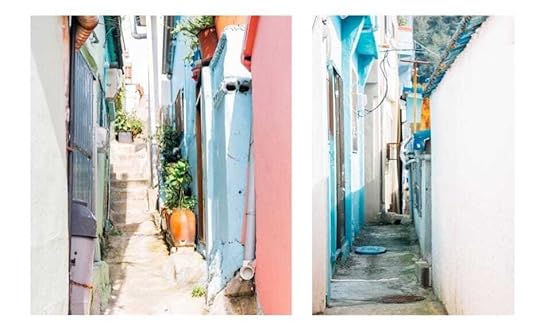 Gamcheon Culture Village has colourful streets and alleys connected by stairs
Gamcheon Culture Village has colourful streets and alleys connected by stairs
Gamcheon Culture Village has become such a popular tourist destination that it attracts visitors from both South Korea and around the world.
In addition to exploring the art-filled streets, visitors can participate in various cultural activities and workshops offered by local artists.
Visitors can explore these narrow alleyways adorned with street art, making it a popular destination for those interested in art and culture.
I visited the village with my own family and my Korean family, too.
One of my sons has lived in the city of Daegu in South Korea for the past ten years, so South Korea is now a place I know well, having visited many times and at different times of the year.
You might be interested in reading my post on Korean Wedding Culture and wearing the Korean Hanbok at my son’s wedding.
When I’m in South Korea I often stay with family but I would recommend Booking Dotcom or Klook Hotels to you to find and book your accomodation in South Korea.
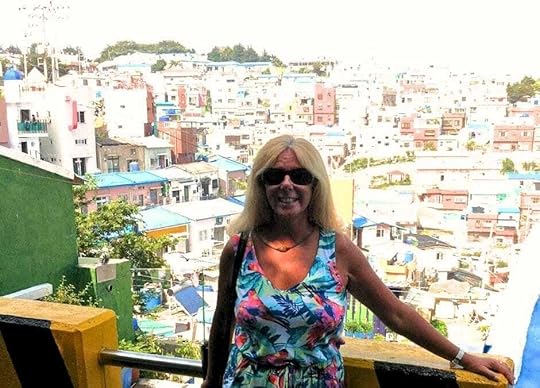 Exploring Gamcheon Culture VillageKlook.com (function (d, sc, u) { var s = d.createElement(sc), p = d.getElementsByTagName(sc)[0]; s.type = "text/javascript"; s.async = true; s.src = u; p.parentNode.insertBefore(s, p); })( document, "script", "https://affiliate.klook.com/widget/fe..." );The Little Prince and Fox statue
Exploring Gamcheon Culture VillageKlook.com (function (d, sc, u) { var s = d.createElement(sc), p = d.getElementsByTagName(sc)[0]; s.type = "text/javascript"; s.async = true; s.src = u; p.parentNode.insertBefore(s, p); })( document, "script", "https://affiliate.klook.com/widget/fe..." );The Little Prince and Fox statueOne of the iconic landmarks in Gamcheon Village is the Little Prince and Fox statue, inspired by Antoine de Saint-Exupéry’s famous French novella “The Little Prince.”
This statue sits on a ledge and overlooks the city and has become a symbol of the village.
It is a popular spot for visitors to take photos.
 Little Prince and Fox StatueKlook.com (function (d, sc, u) { var s = d.createElement(sc), p = d.getElementsByTagName(sc)[0]; s.type = "text/javascript"; s.async = true; s.src = u; p.parentNode.insertBefore(s, p); })( document, "script", "https://affiliate.klook.com/widget/fe..." );CAFE STREET Gamcheon Culture Village
Little Prince and Fox StatueKlook.com (function (d, sc, u) { var s = d.createElement(sc), p = d.getElementsByTagName(sc)[0]; s.type = "text/javascript"; s.async = true; s.src = u; p.parentNode.insertBefore(s, p); })( document, "script", "https://affiliate.klook.com/widget/fe..." );CAFE STREET Gamcheon Culture VillageThe village also features a “Cafe Street” where visitors can find quaint cafes offering a place to rest and enjoy scenic views of the surroundings and due to its elevated location, Gamcheon Culture Village offers panoramic views of the sea and the city of Busan.
When visiting the culture village, it’s advisable to wear comfortable shoes, as the village is built on steep terrain with many stairs.
Additionally, the village has become a model for community-driven art projects, showcasing the positive impact that art and creativity can have on urban spaces.
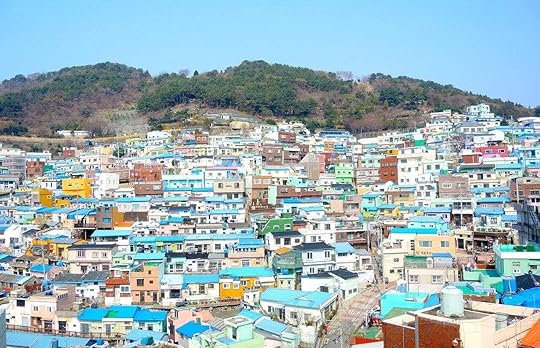
The houses are built in a step formation and painted in pretty pastel colours.
The streets are a maze of tiny winding alleys and steep worn staircases.
Everywhere you look you’ll find interesting wall murals, wood carvings, and graffiti style paintings created by local artisans.


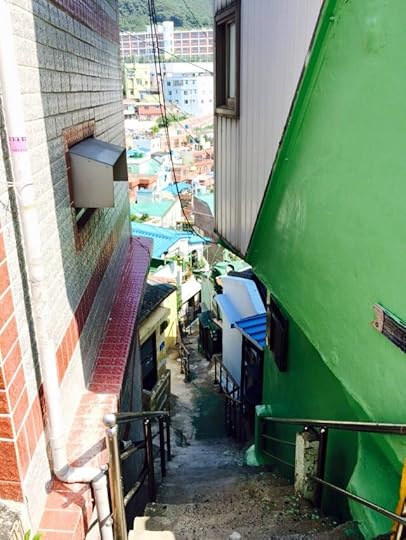
Walking around this charming village and residential area is akin to exploring a living breathing art gallery but as you rise through the streets, if you can take your eyes off the art for a moment, you’ll also see that the view from the top of South Korea’s second largest city and ‘summer capital’, Busan, is quite breath-taking.
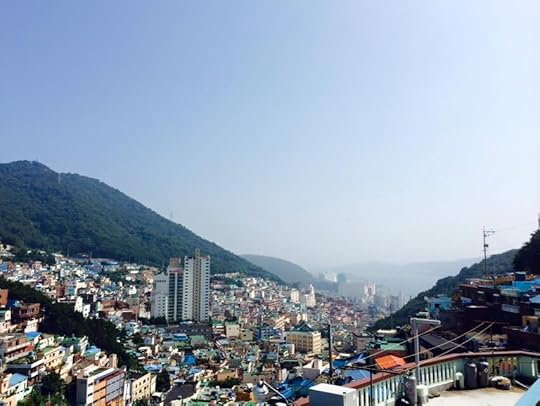 South Korea’s summer capital is quite breath-takingBEST TIME TO VISIT Gamcheon Culture Village?
South Korea’s summer capital is quite breath-takingBEST TIME TO VISIT Gamcheon Culture Village?There is no bad time to visit but as the culture village as it is extremely popular with visitors the best time to visit would be in the morning or close to sunset and during a weekday rather than a weekend.
As for the time of year, the best time to visit is during the Spring and Autumn months as it is warm and sunny but not too hot.
If you want to catch the cherry blossoms then plan your travel between late March and mid-April.
I visited Gamcheon Culture Village in the summer month of June.
It was incredibly hot, which made walking up the streets and steps quite challenging, but that perhaps made it a less-busy time of year for properly exploring the culture village!
Klook.com (function (d, sc, u) { var s = d.createElement(sc), p = d.getElementsByTagName(sc)[0]; s.type = "text/javascript"; s.async = true; s.src = u; p.parentNode.insertBefore(s, p); })( document, "script", "https://affiliate.klook.com/widget/fe..." );HOW TO Go TO Gamcheon Culture VillageMost visitors keen to experience all that South Korea has to offer will fly into Incheon Airport and head straight to the capital city of Seoul.
But it’s so easy to get to Busan – at the southernmost tip of the Korean Peninsular – from Seoul to Busan on the high-speed KTX train.
Busan boasts the freshest seafood, spectacular scenery and fabulous beaches and is a rising coffee shop culture.
Busan is also one of South Korea’s five regional tourism hubs designated by the Ministry of Culture, Sports and Tourism.
SEOUL – DAEGU – BUSANAs a suggested itinerary, while travelling from Seoul to Busan – I would also encourage you to stop over for a few days en-route to explore colourful Daegu – South Korea’s fourth-largest city after Seoul, Incheon, and Busan.
The city of Daegu has so much to offer the visitor (see the post on My Top Ten Things To Do In Daegu) before heading down to the coast to enjoy Gamcheon Culture Village and Busan’s laid-back ambience.

Have you ever visited South Korea?
Did you take the train from Seoul to Busan?
Did you get to explore Gamcheon Culture Village?
Read my other posts on South Korea
THE BACKPACKING HOUSEWIFE RECOMMENDS TRAVEL INSURANCE
THE BACKPACKING HOUSEWIFE USES AND RECOMMENDS BOOKING DOTCOM
The post Exploring Gamcheon Culture Village Busan South Korea appeared first on The Backpacking Housewife.





